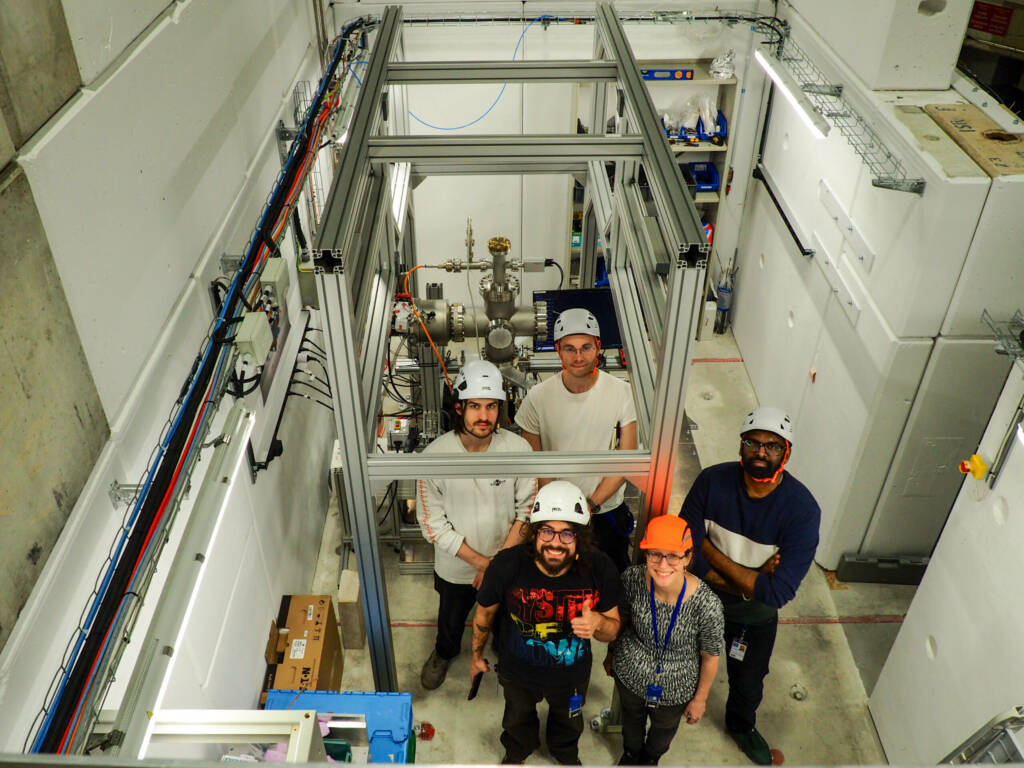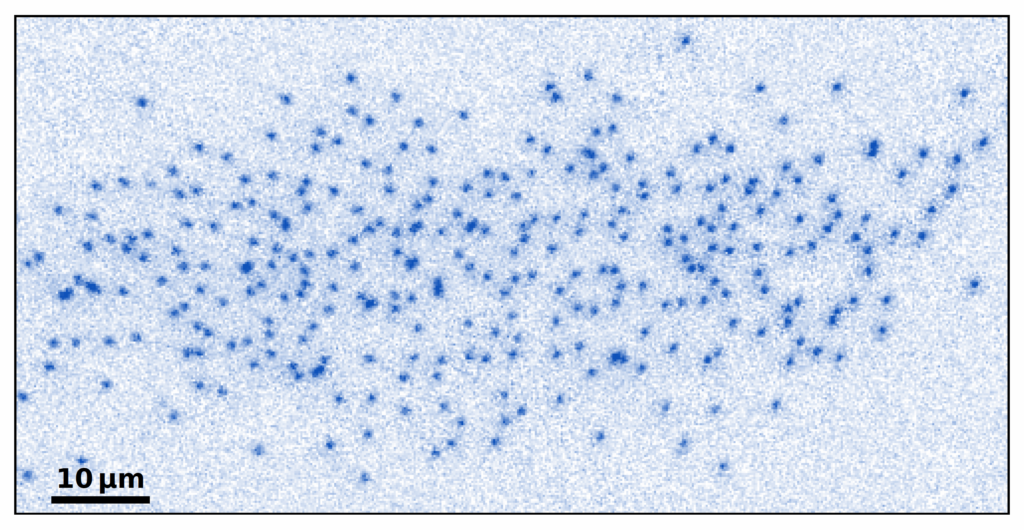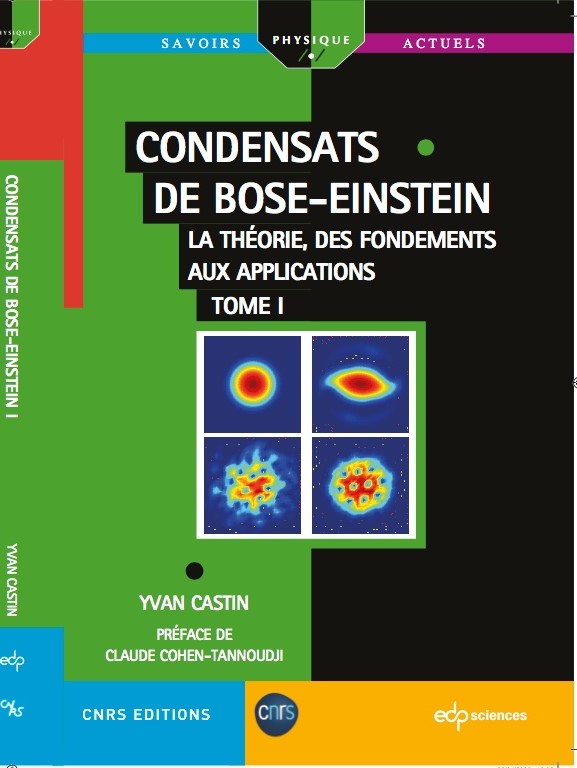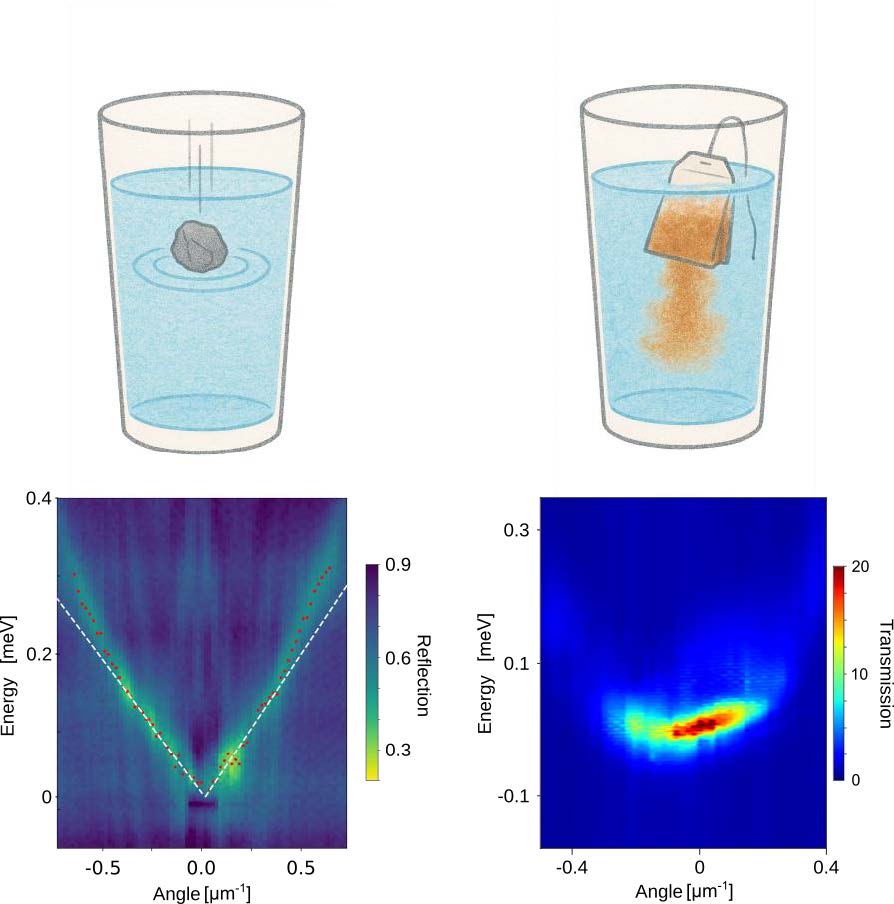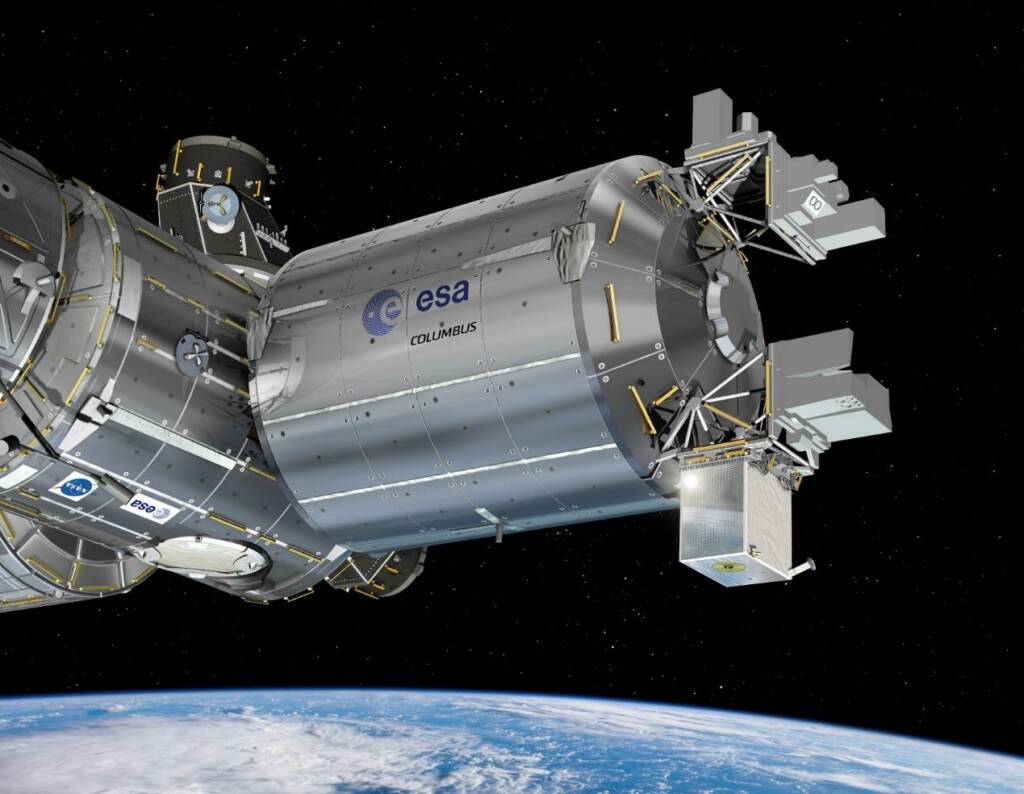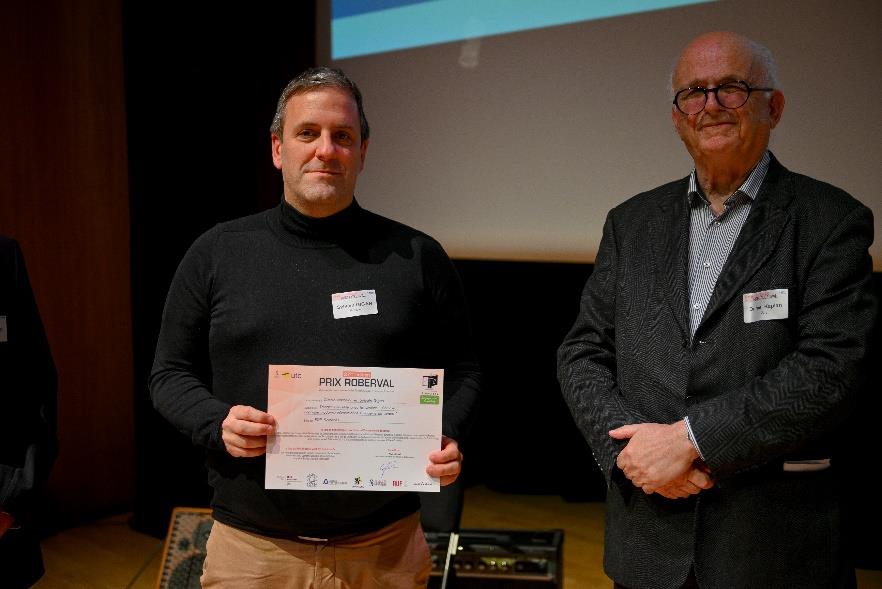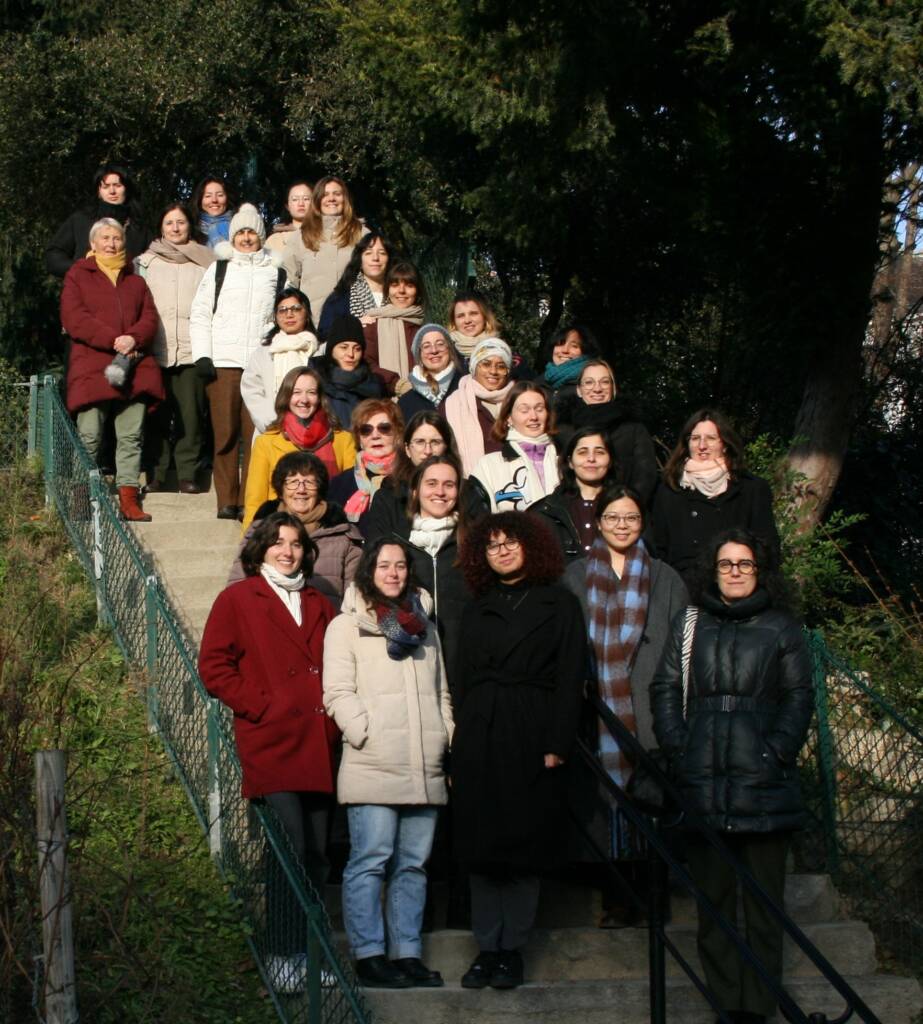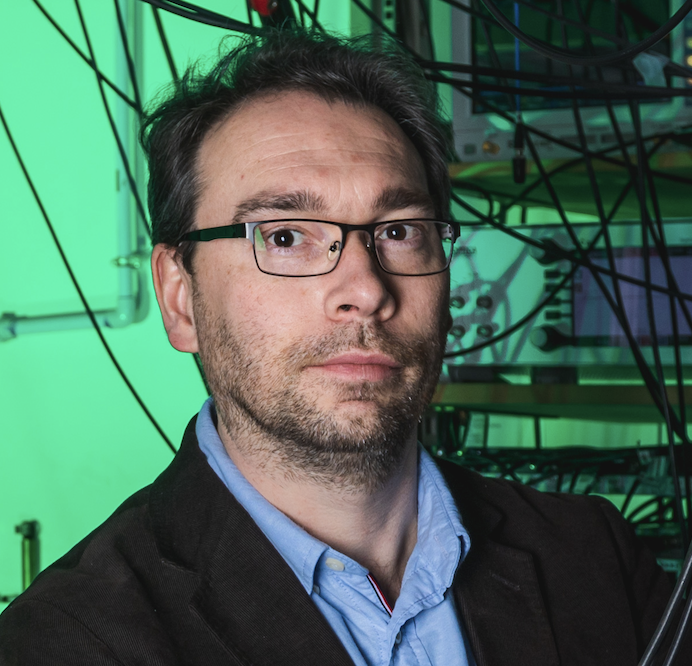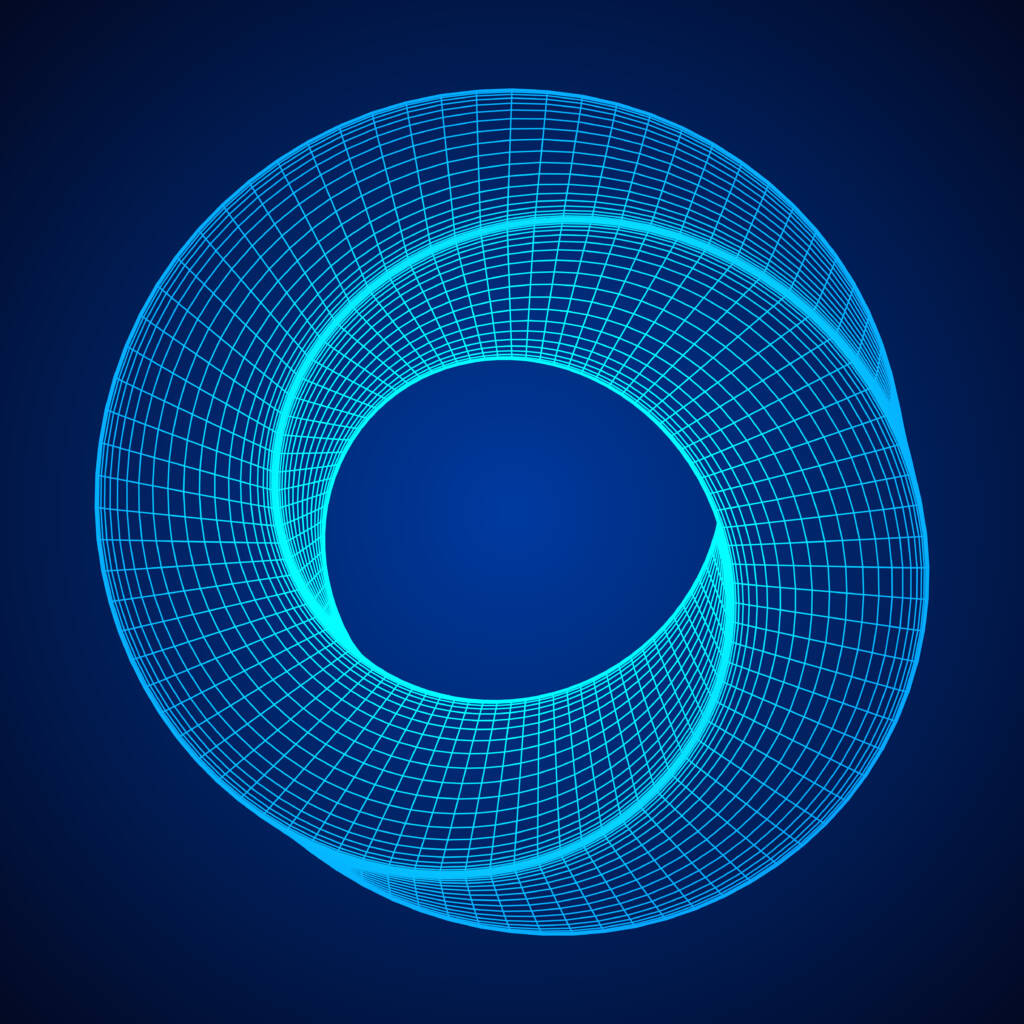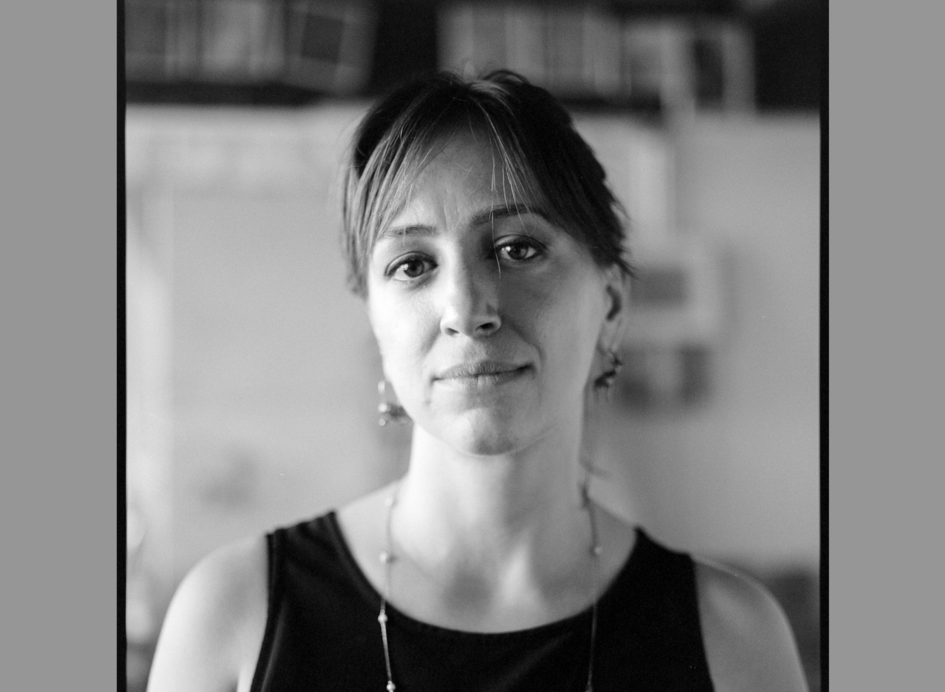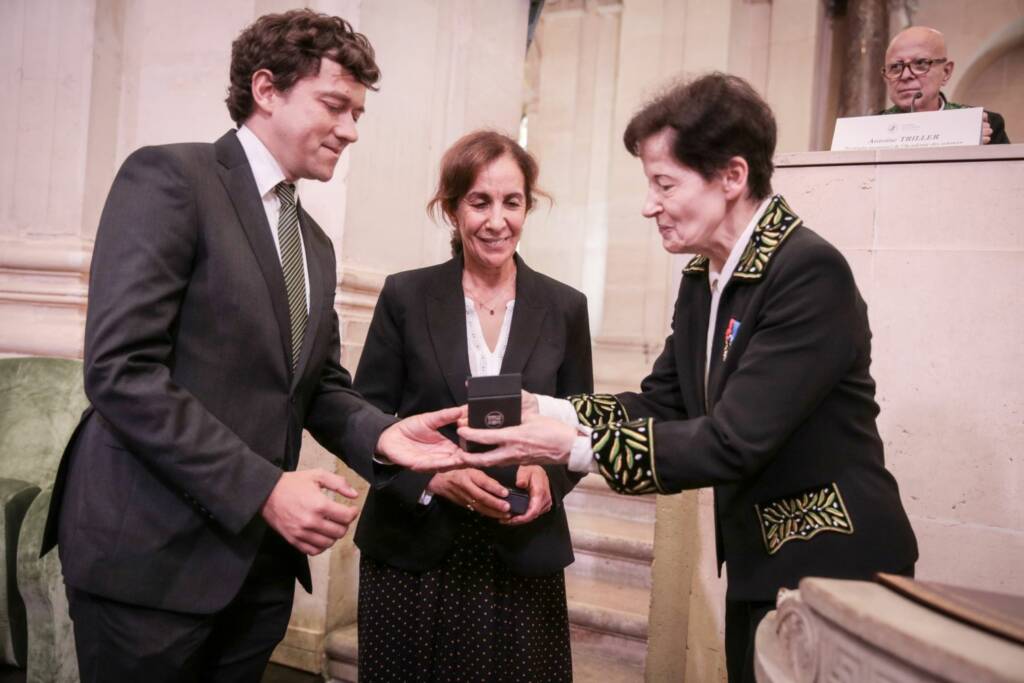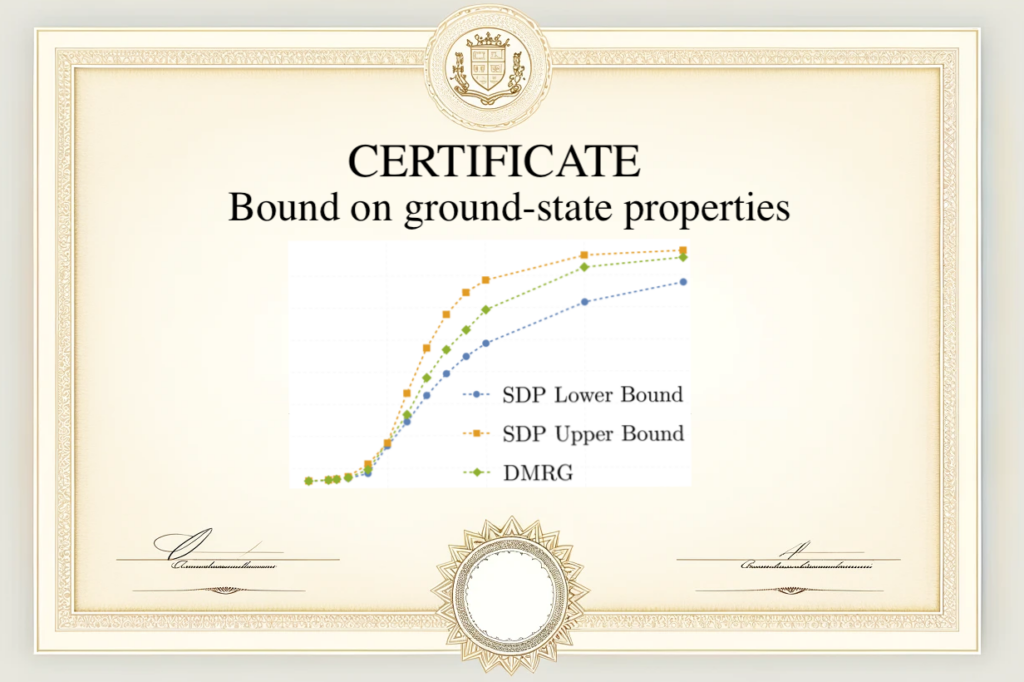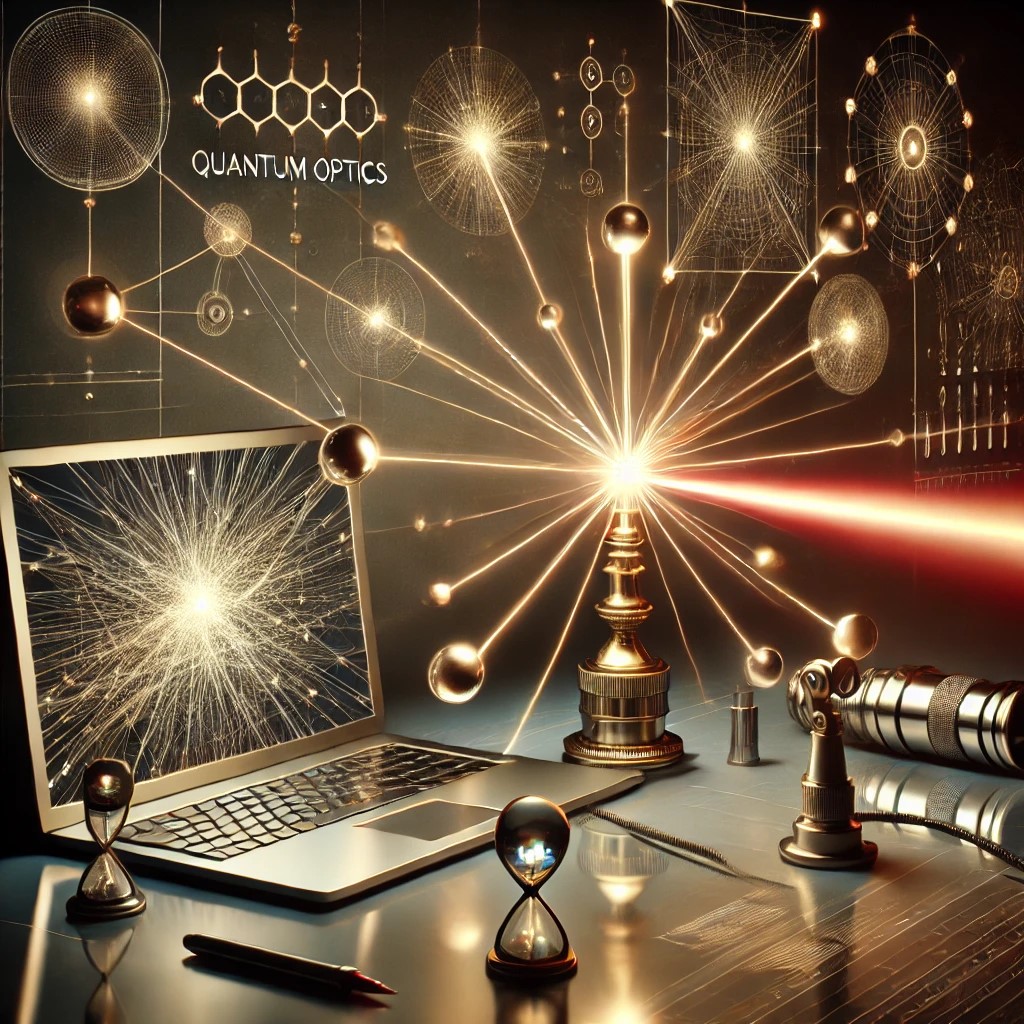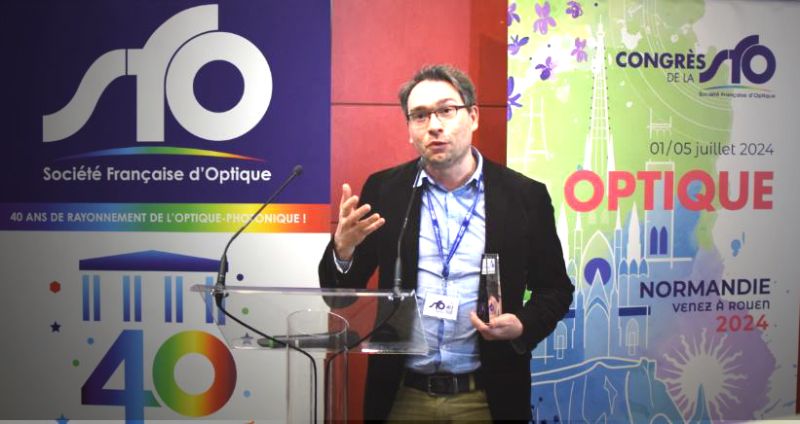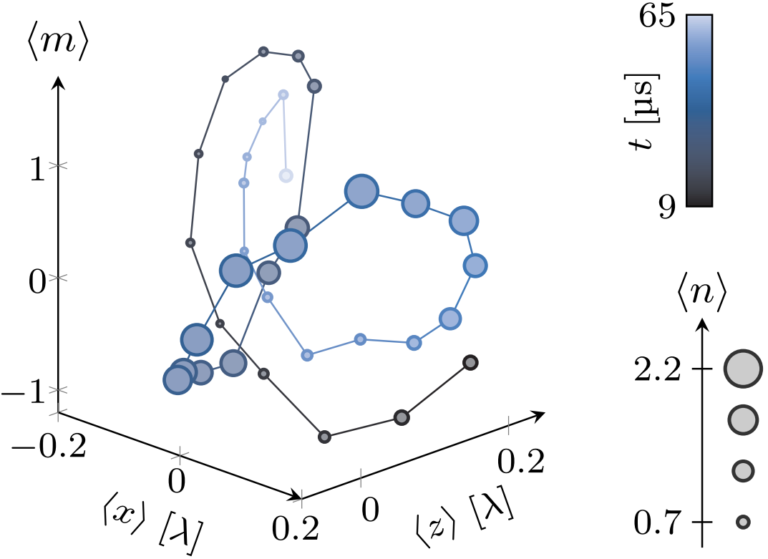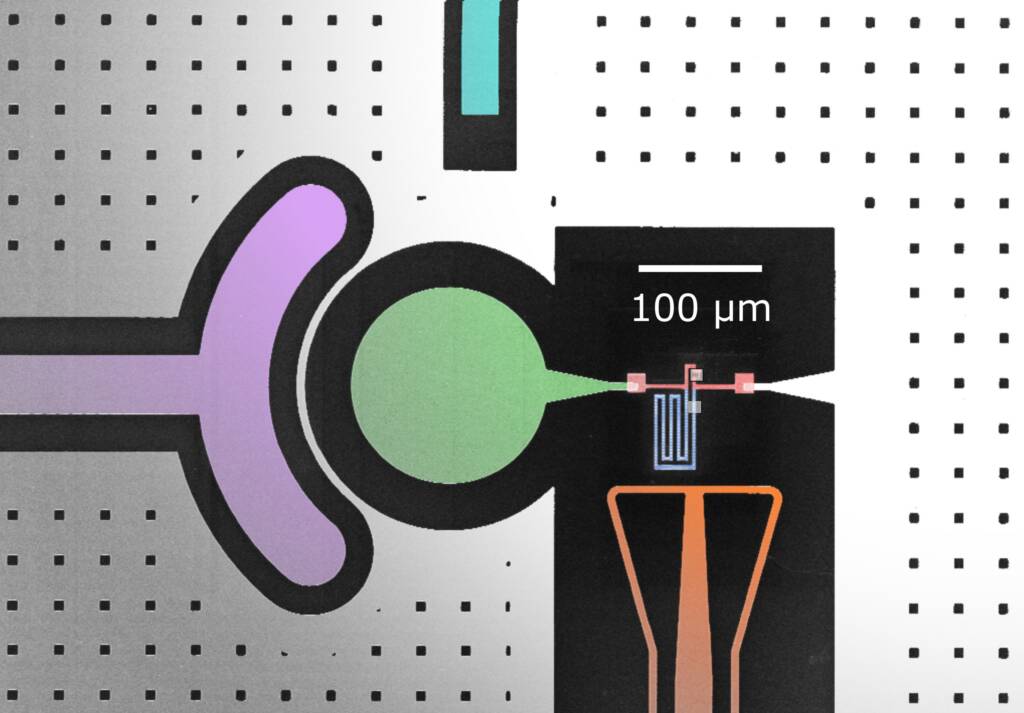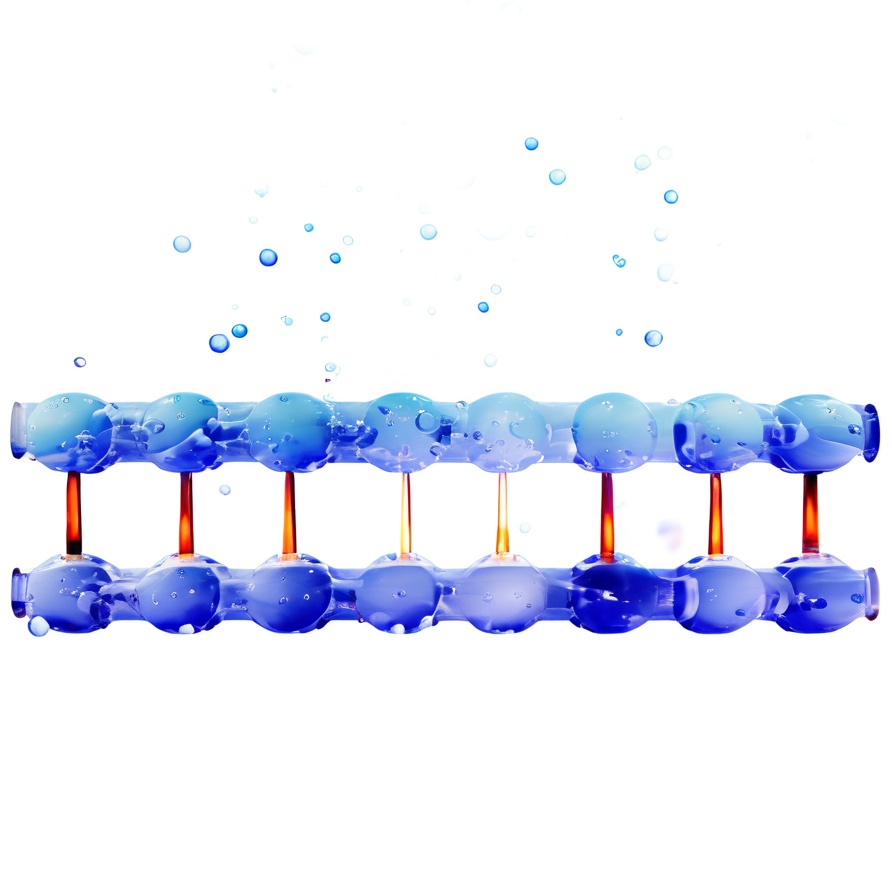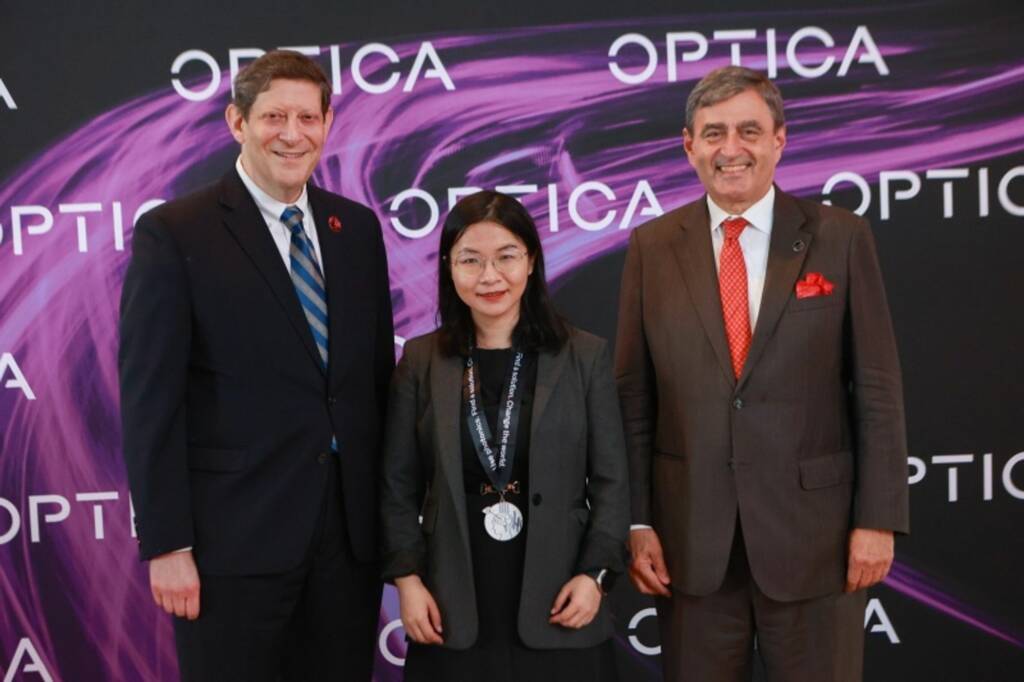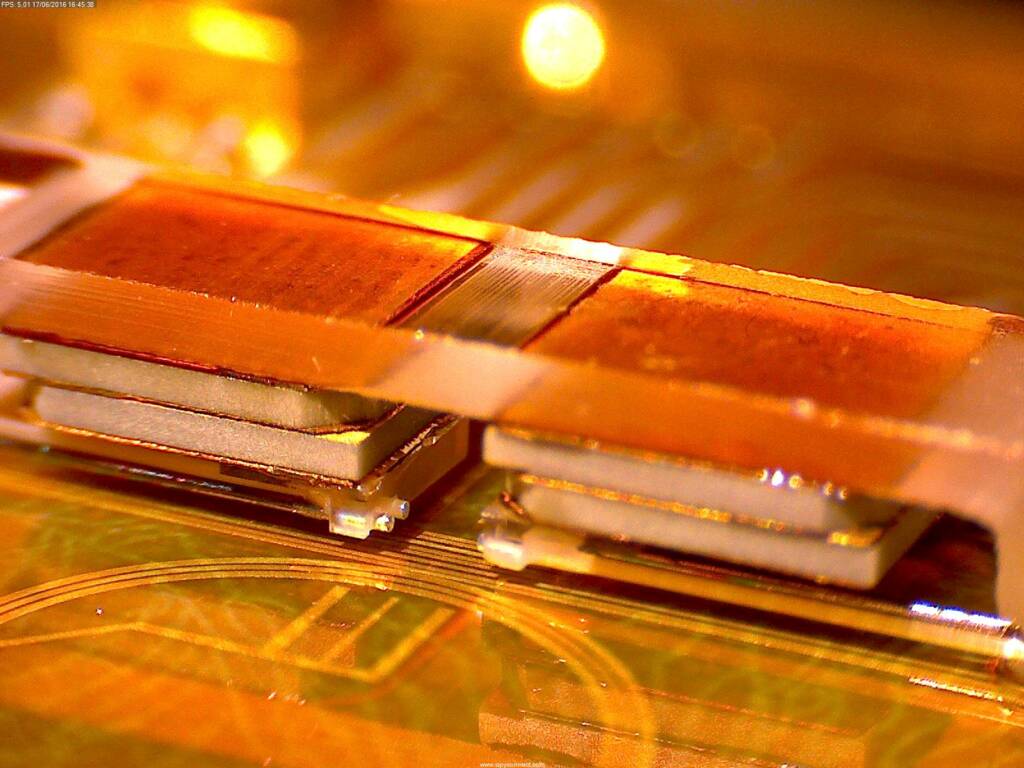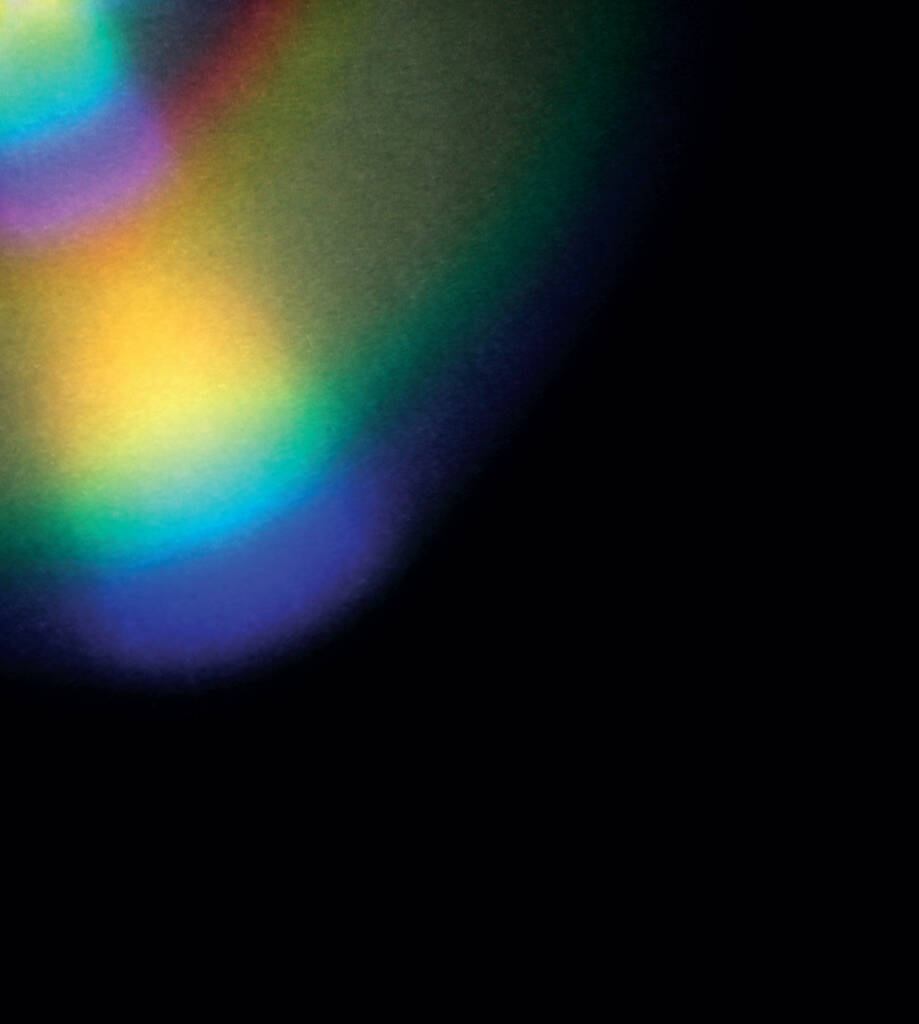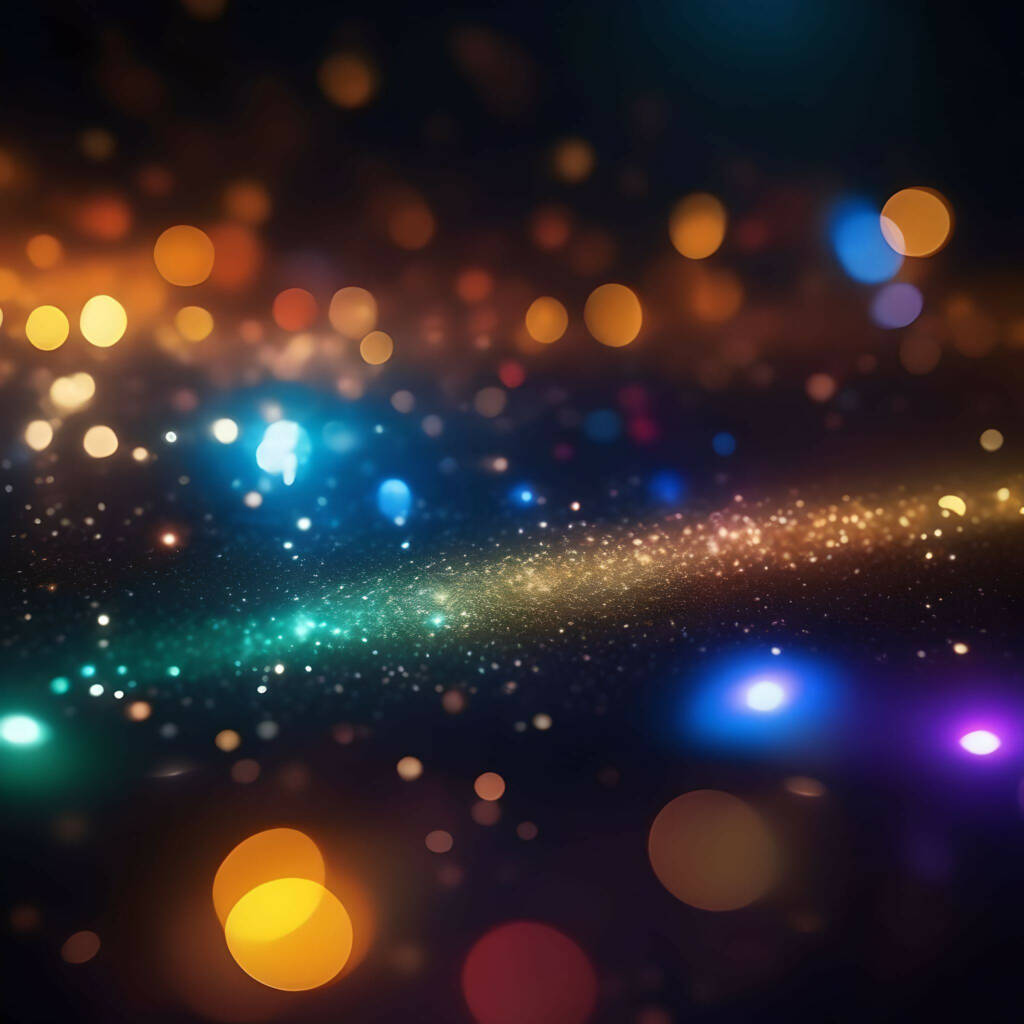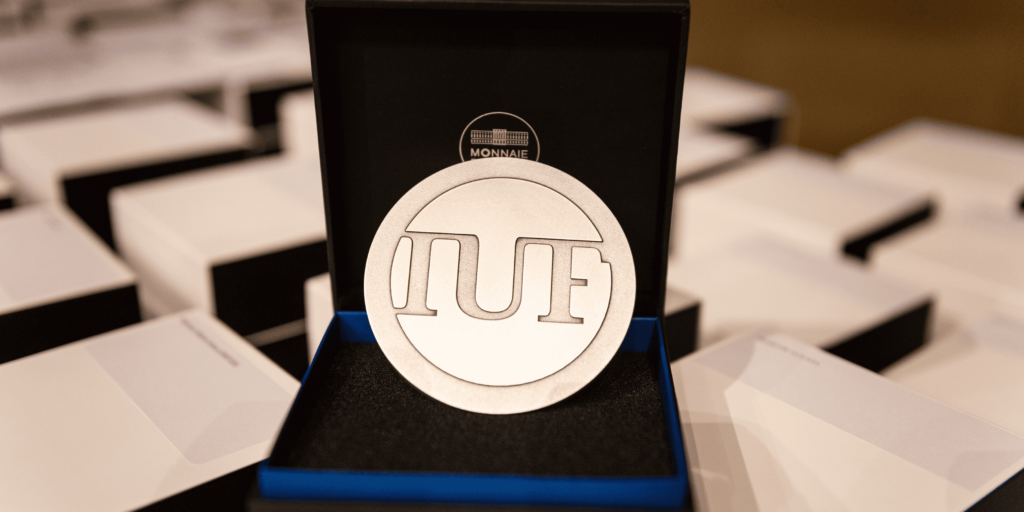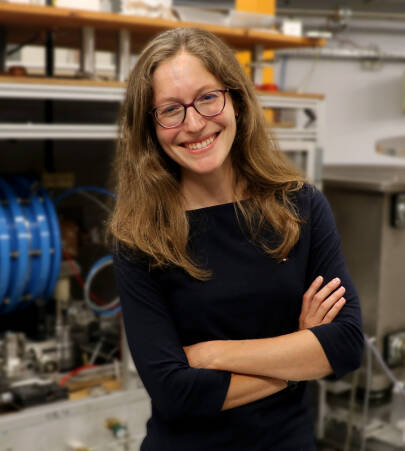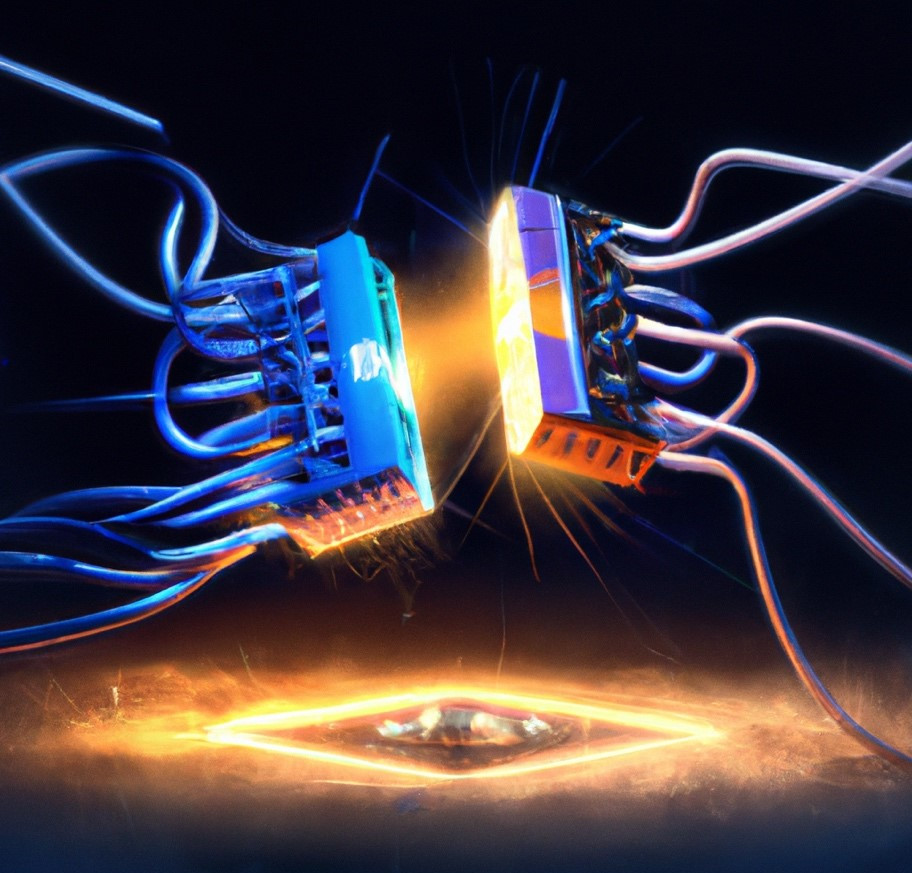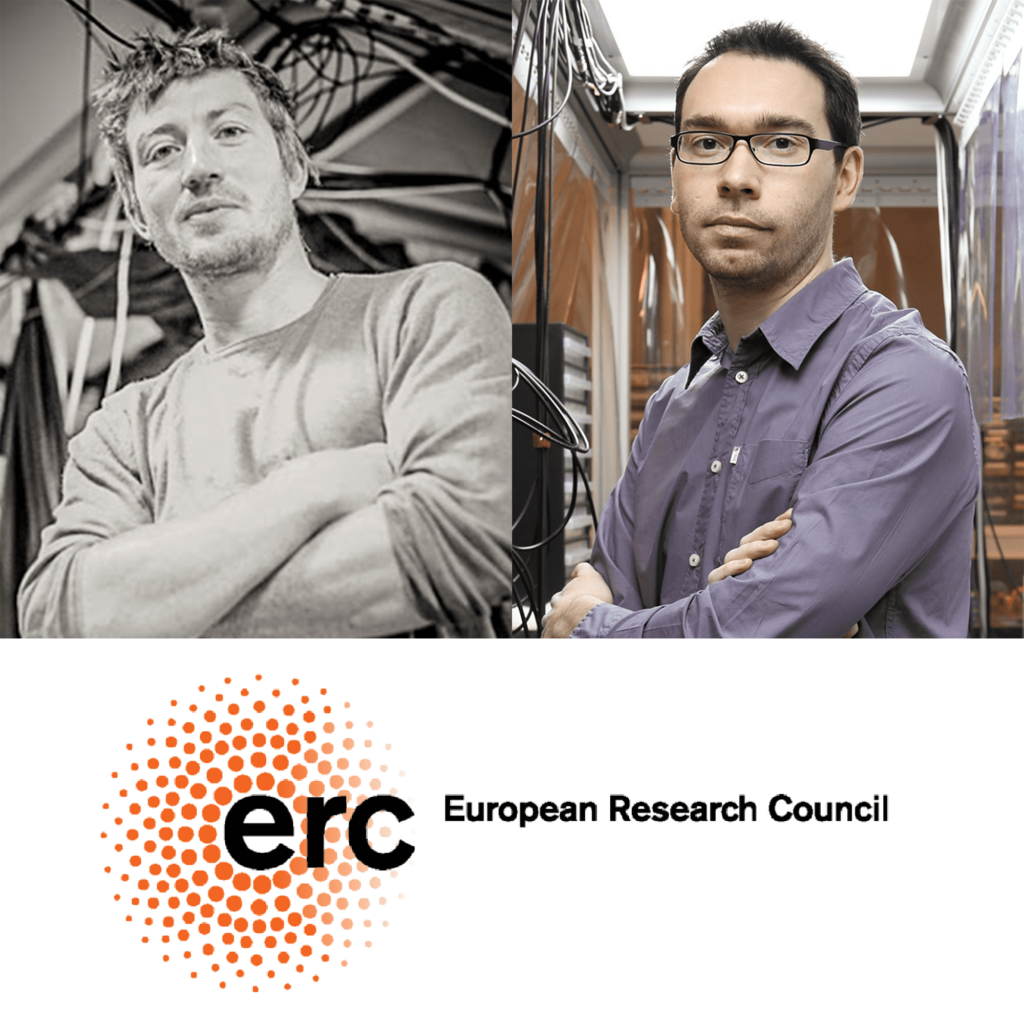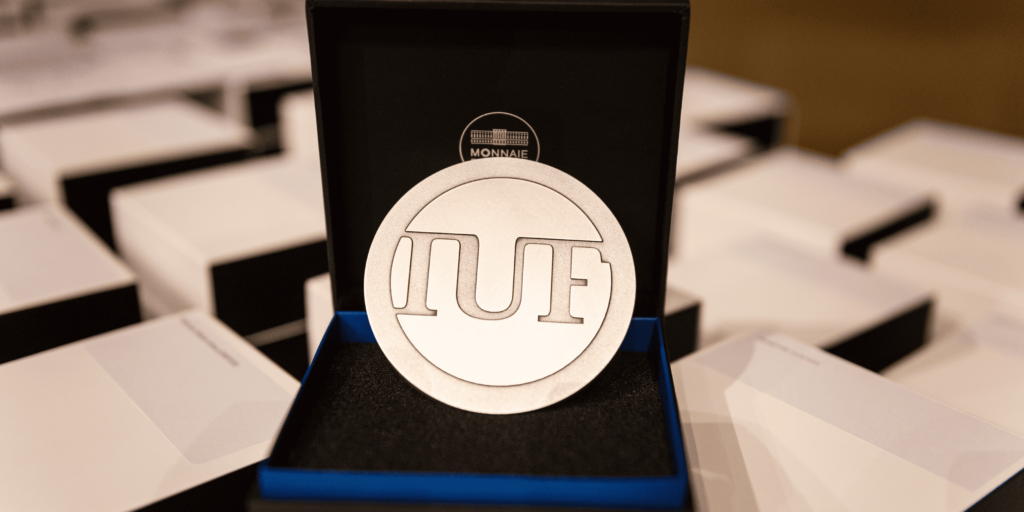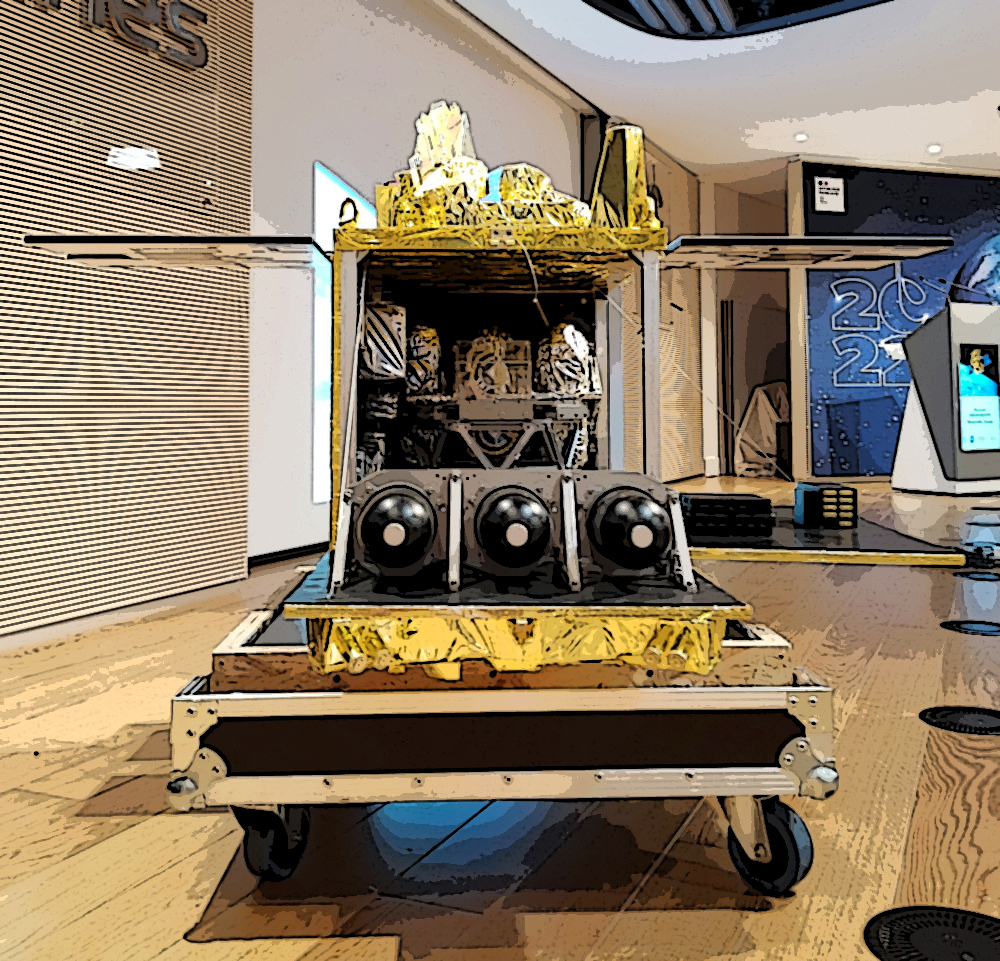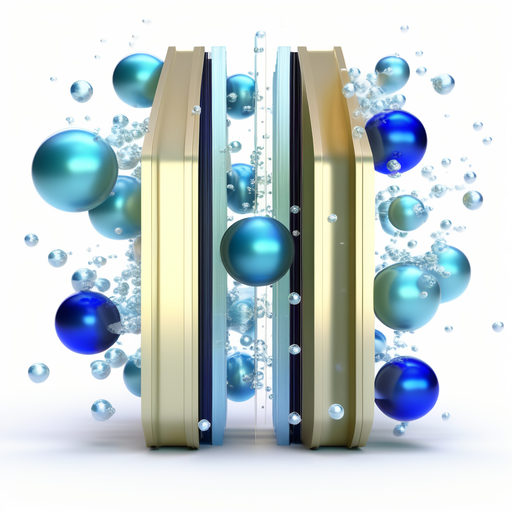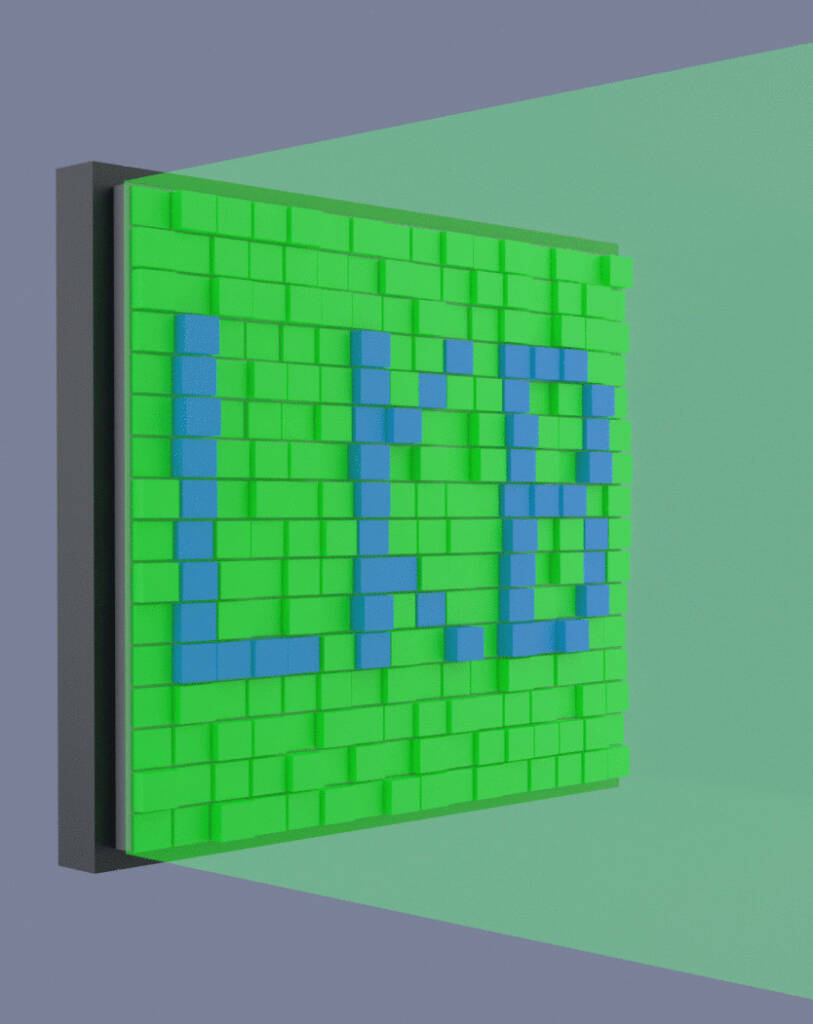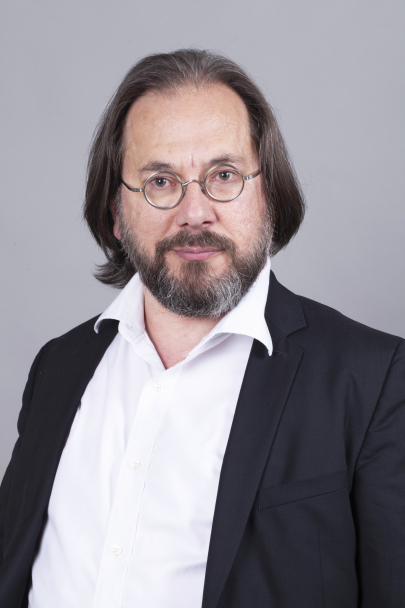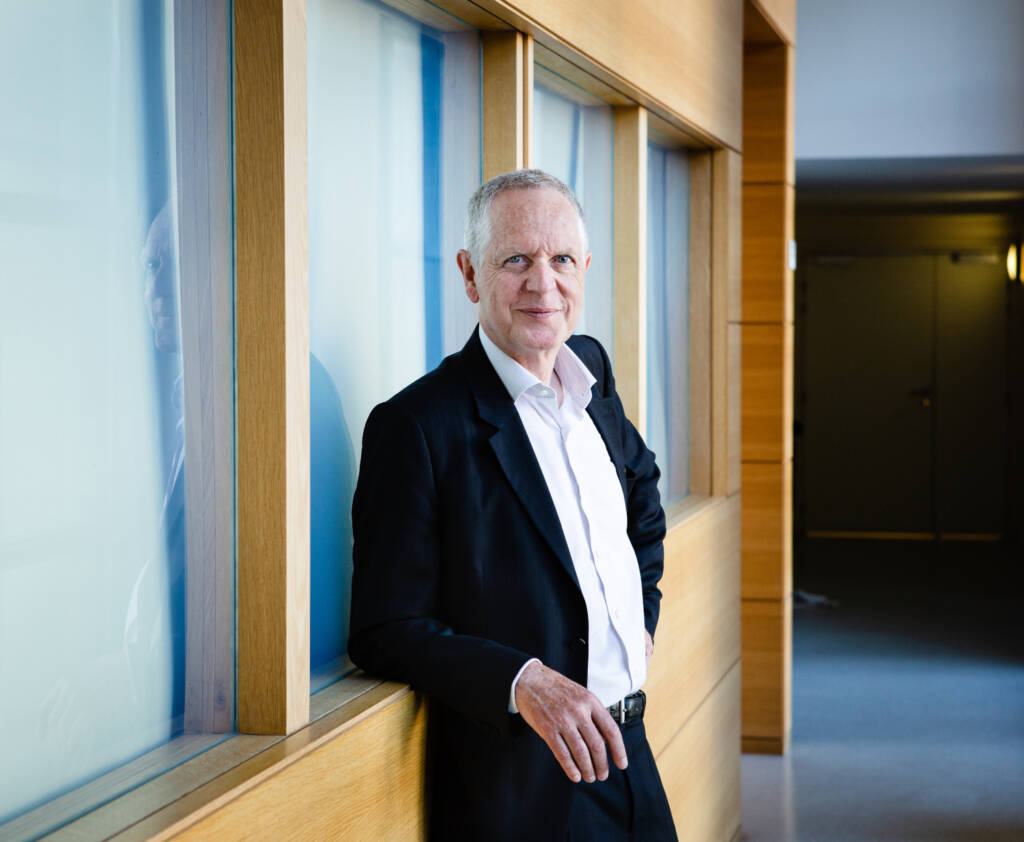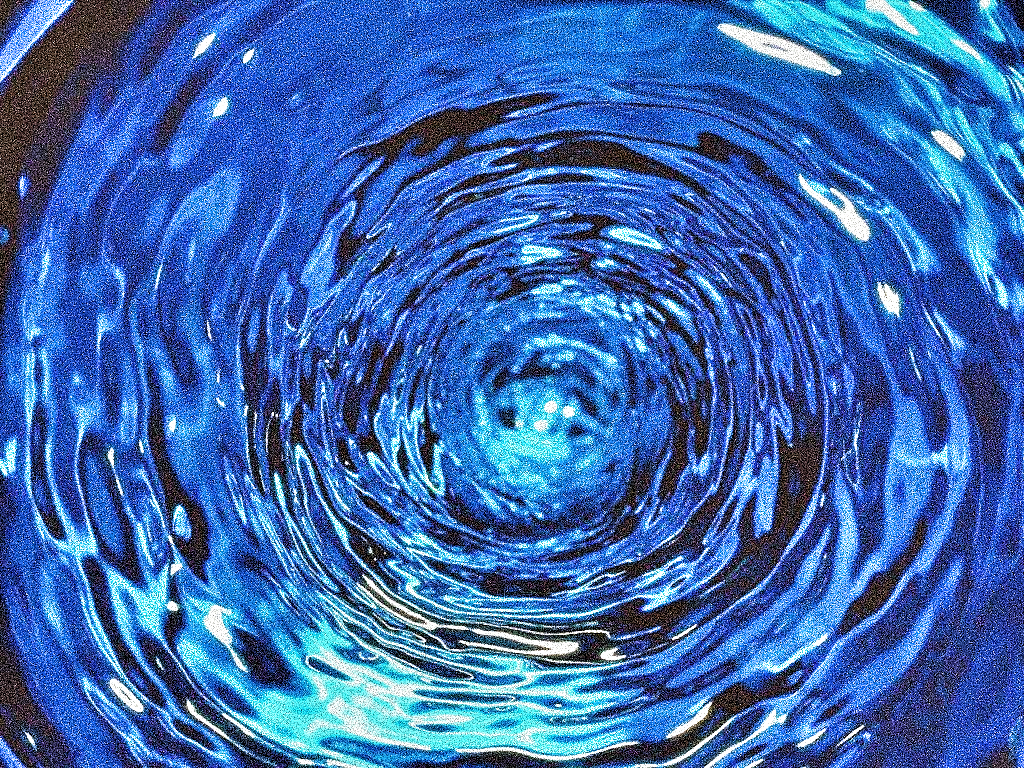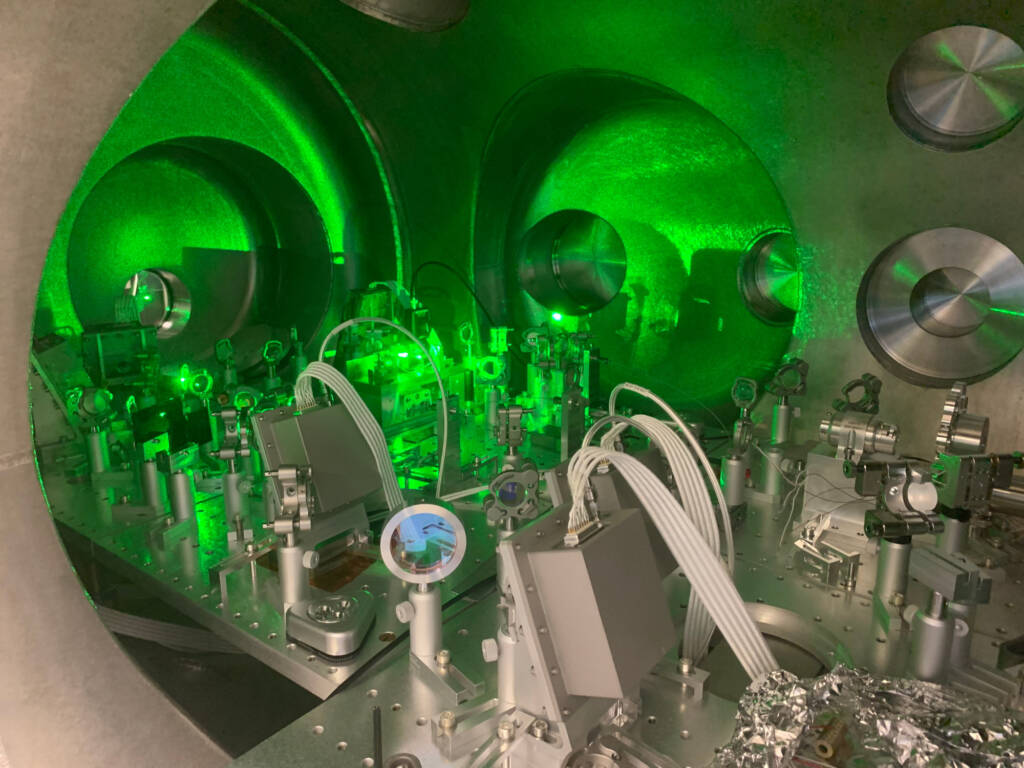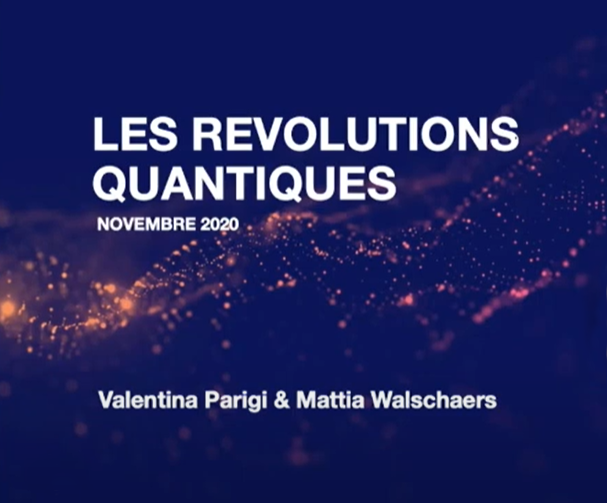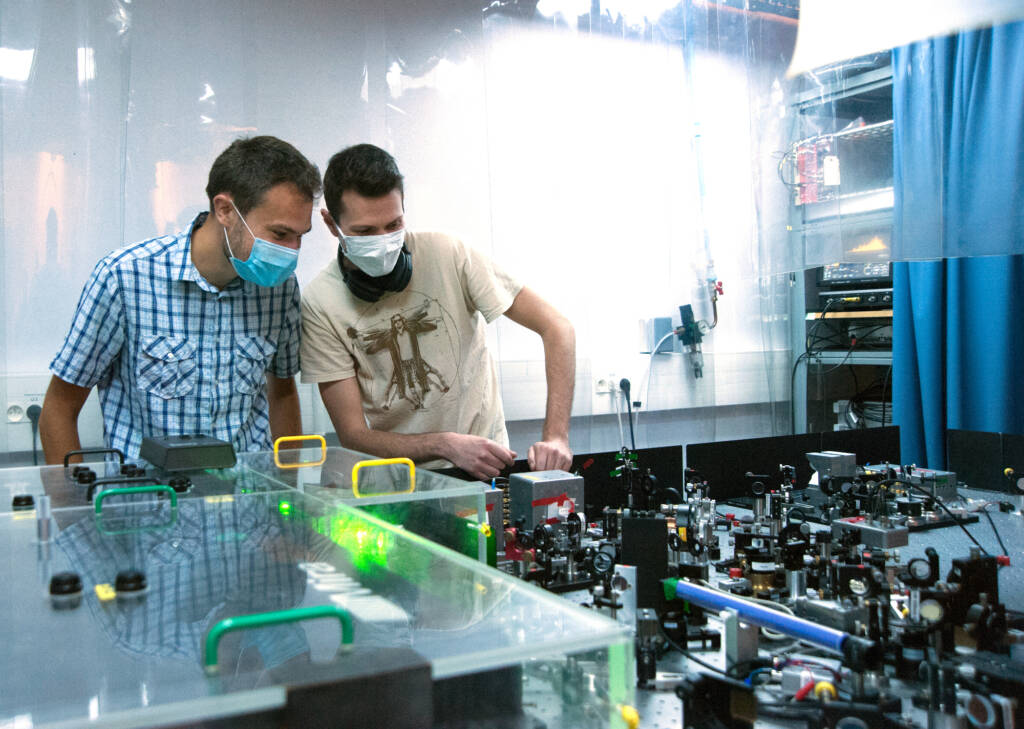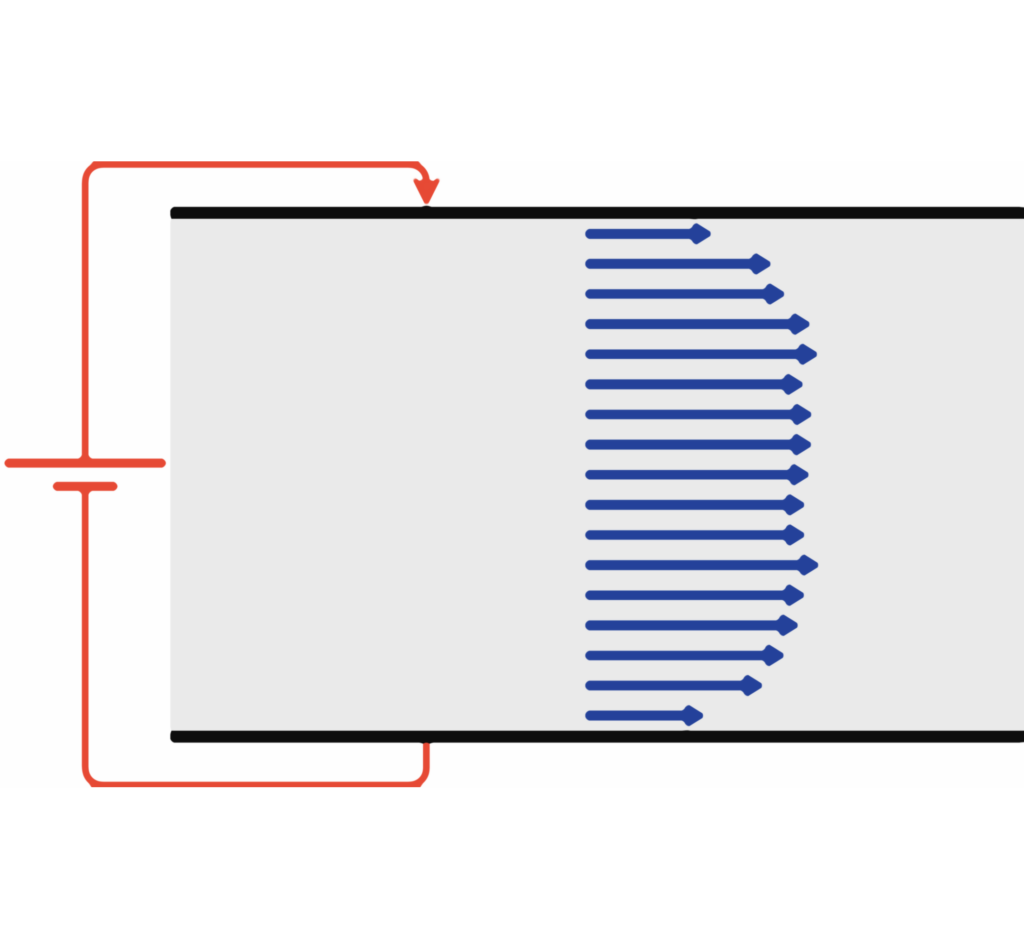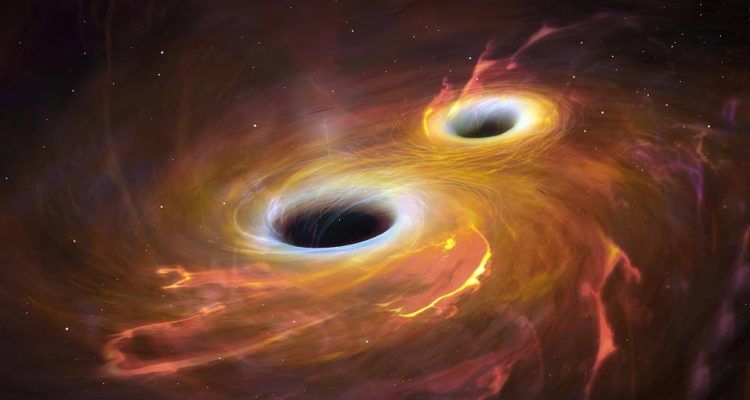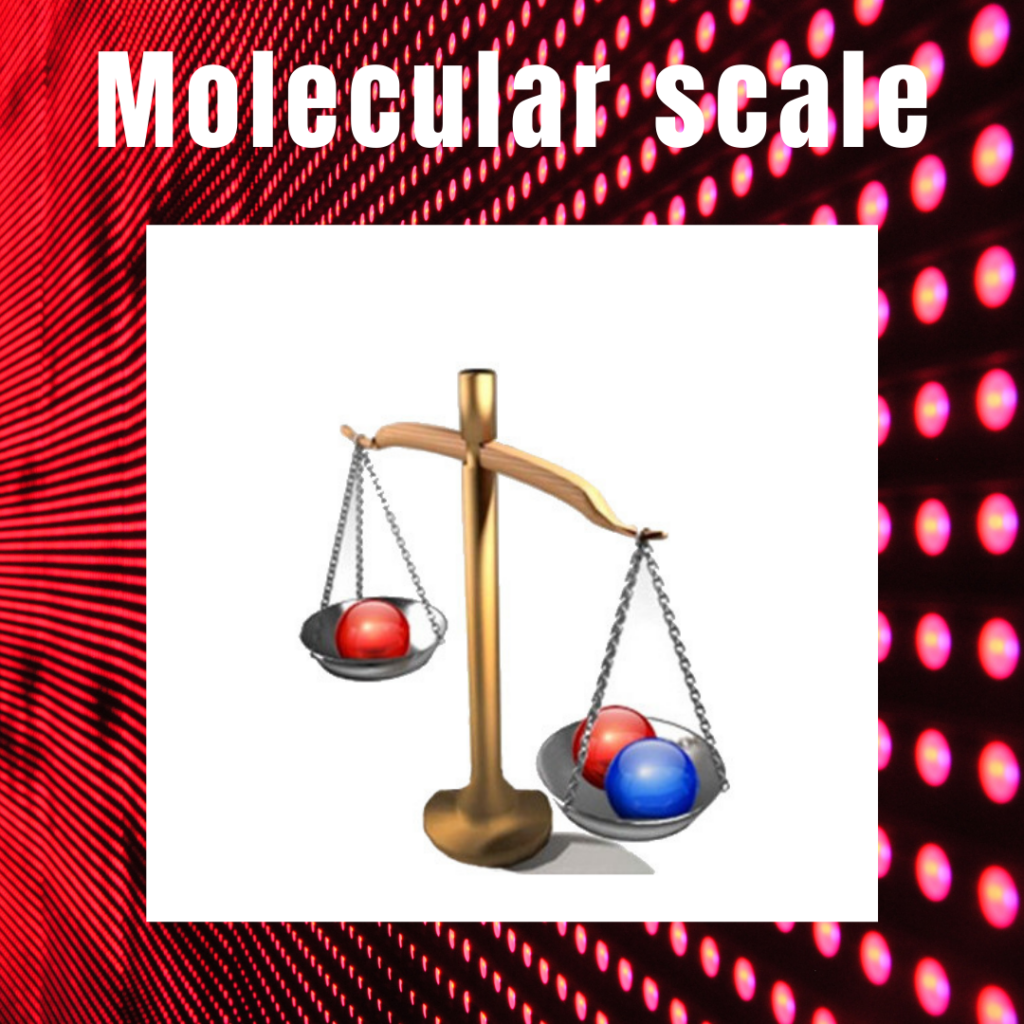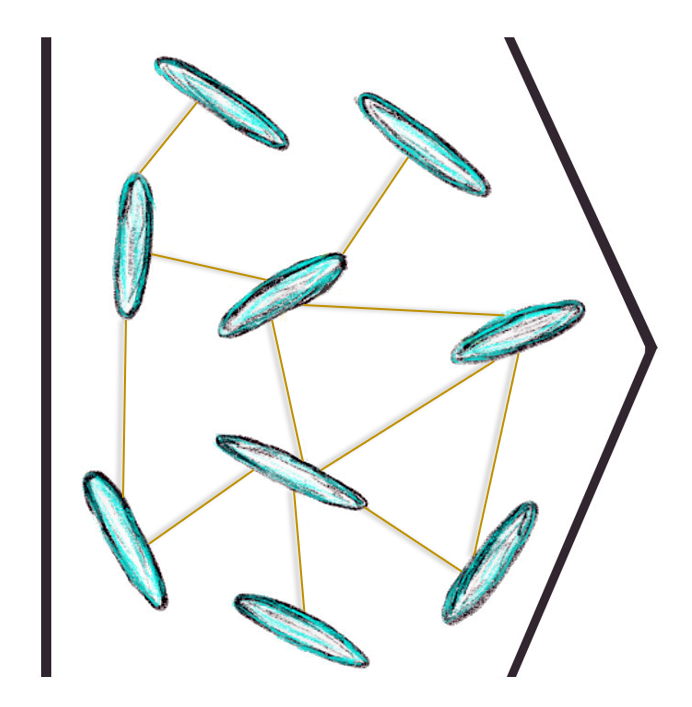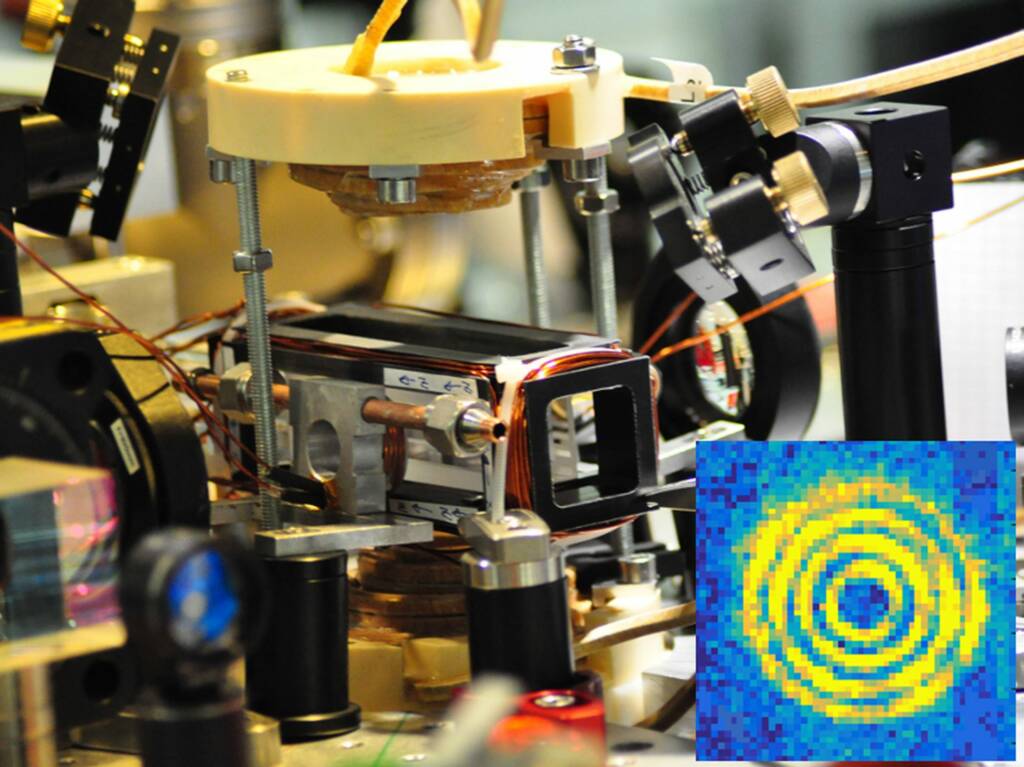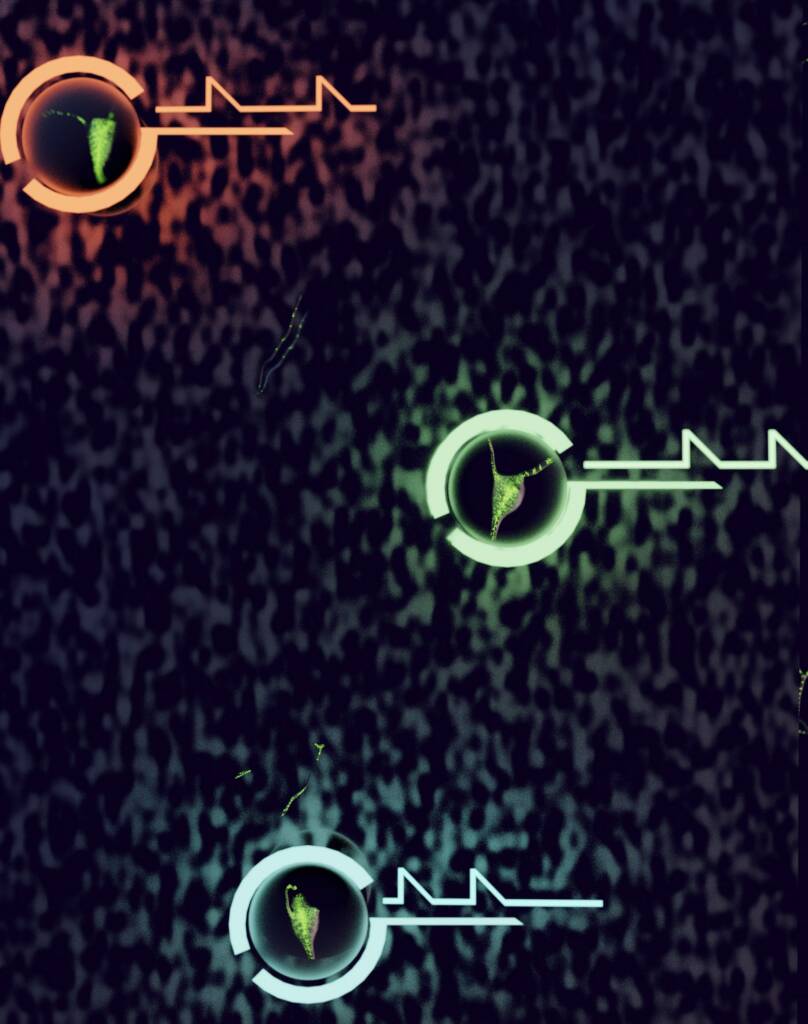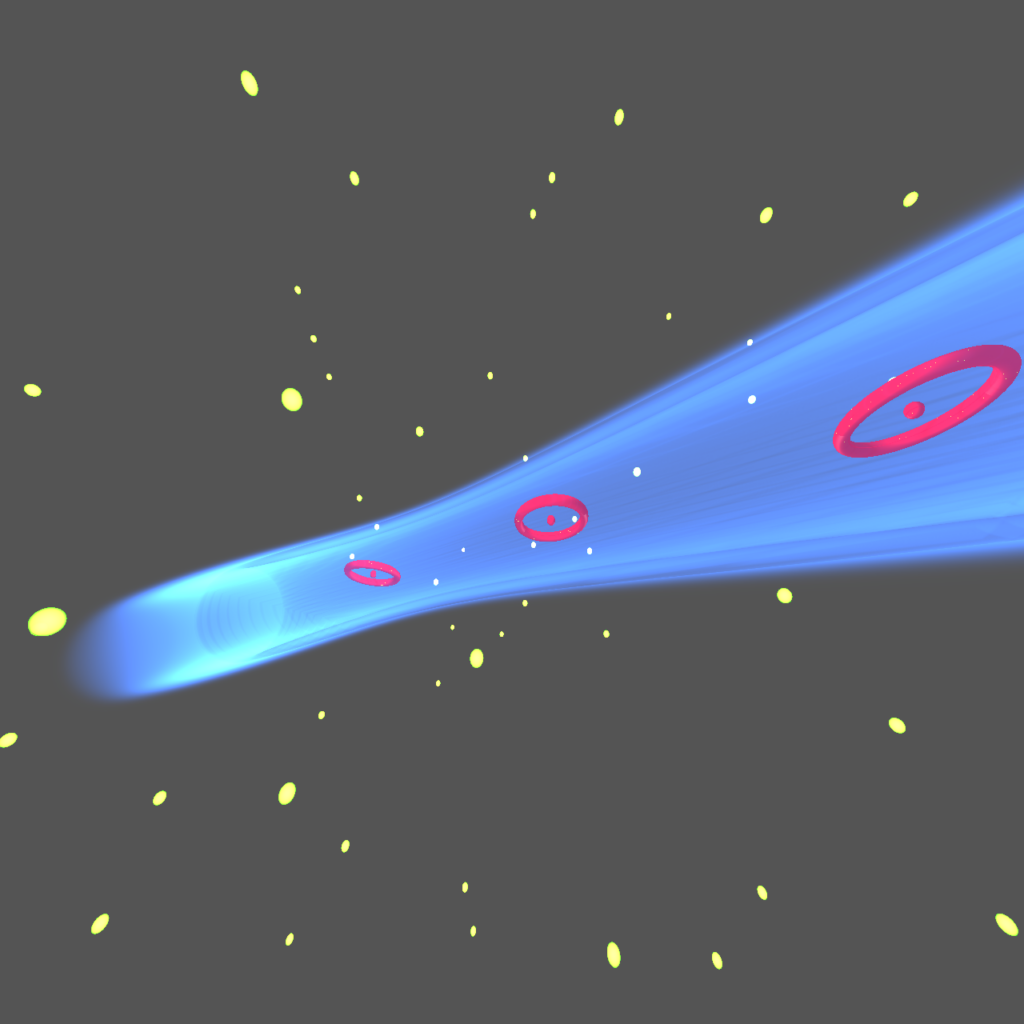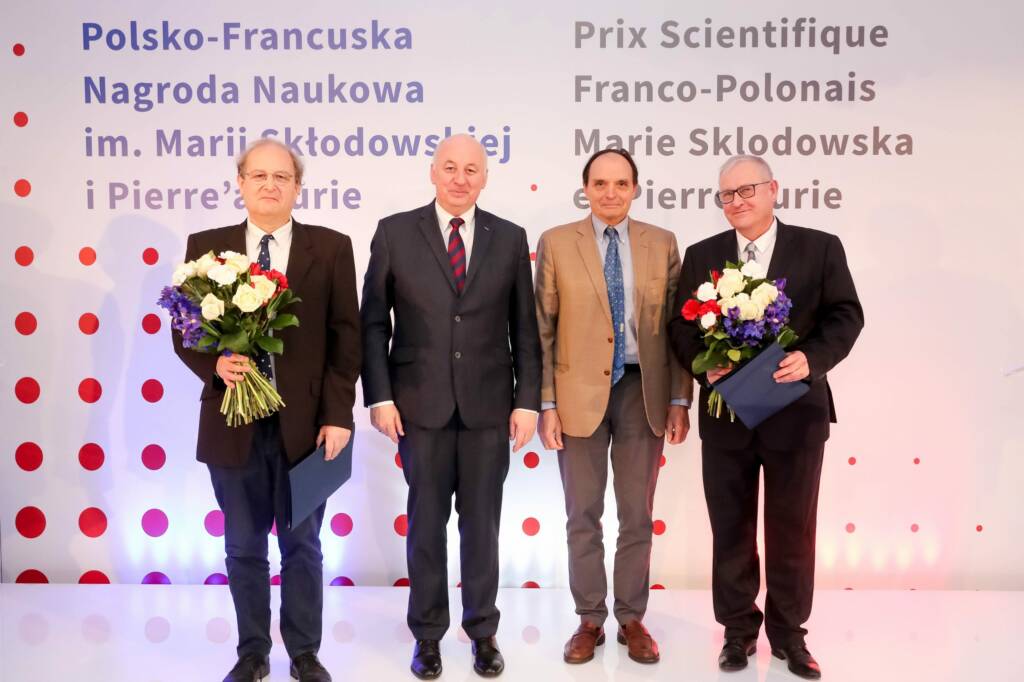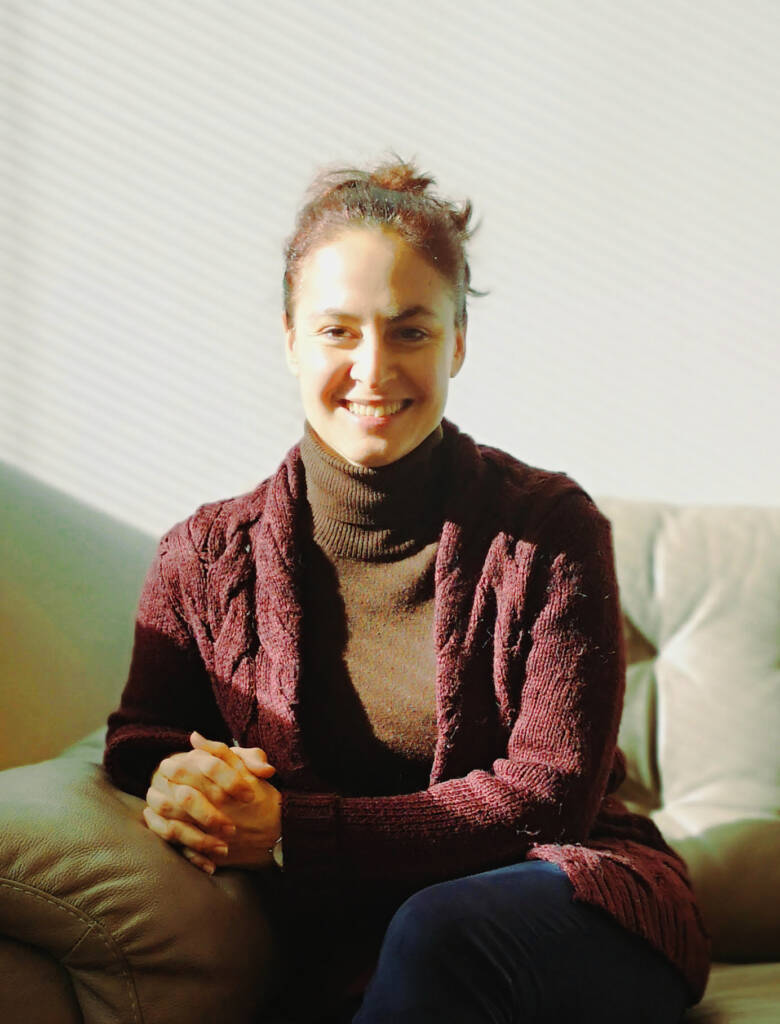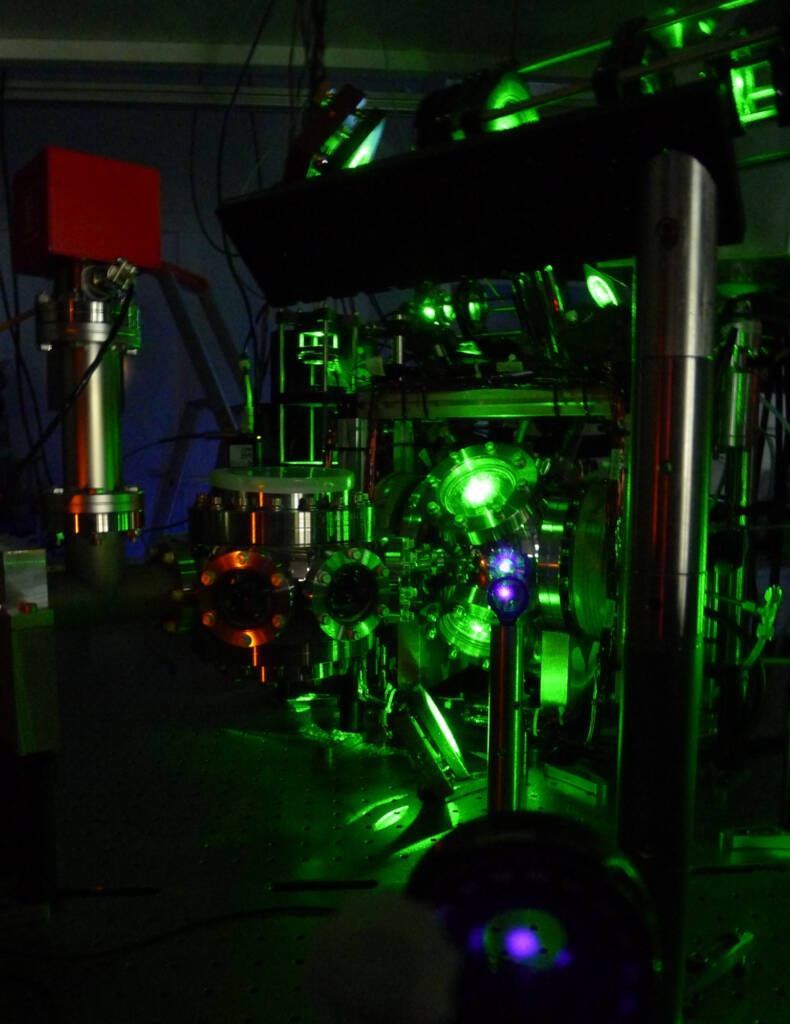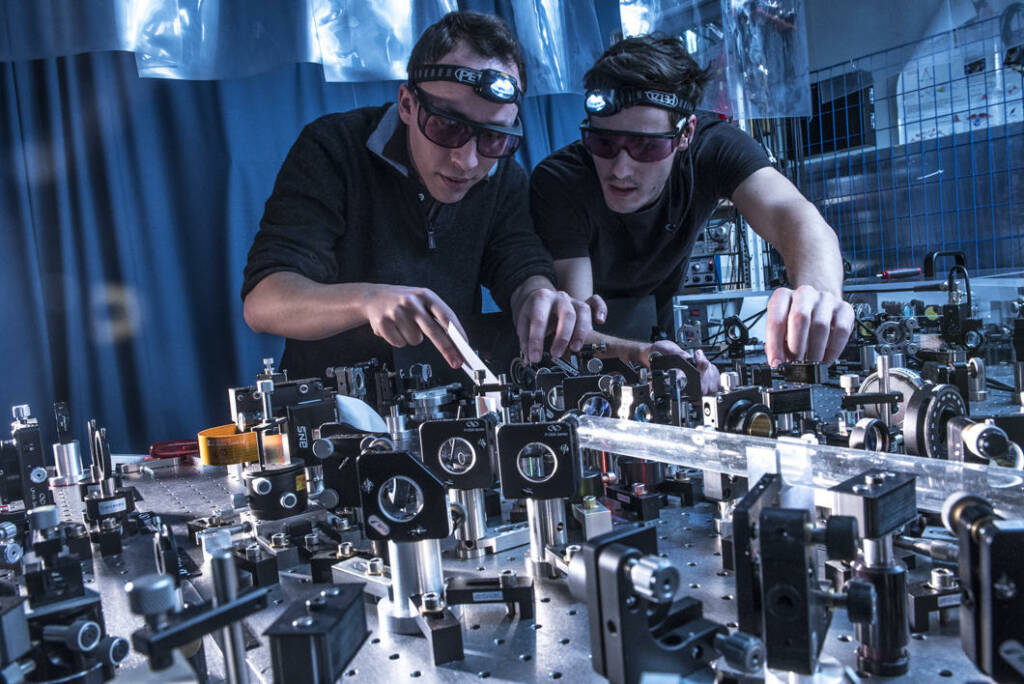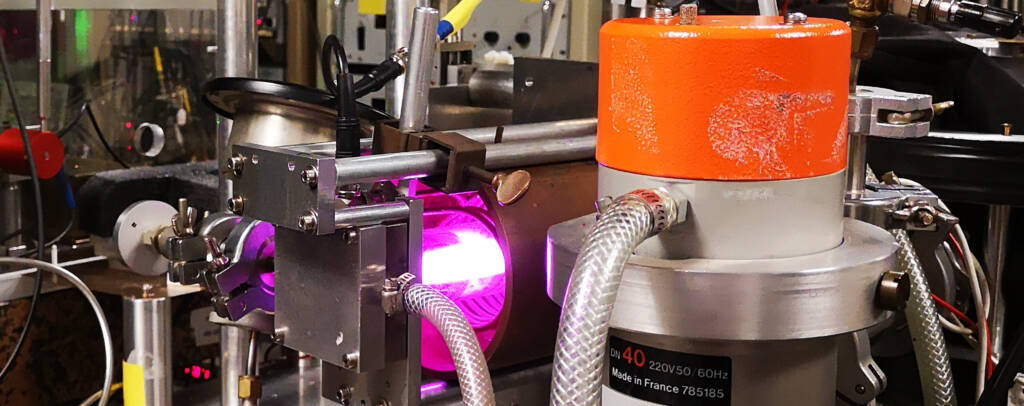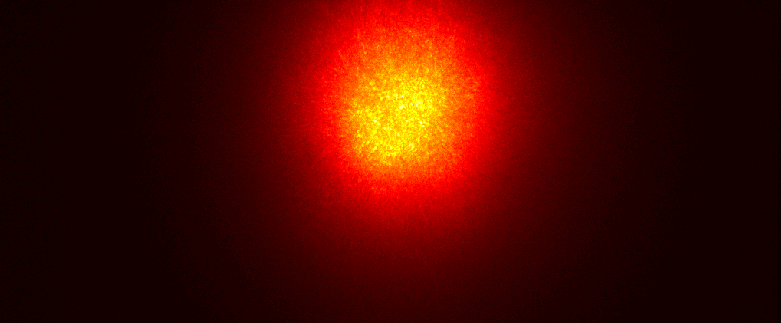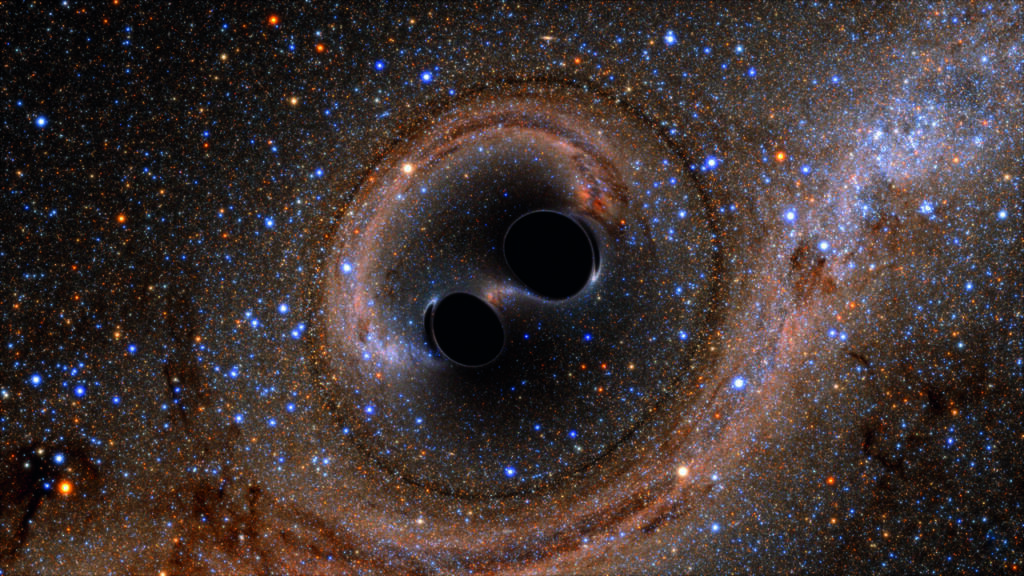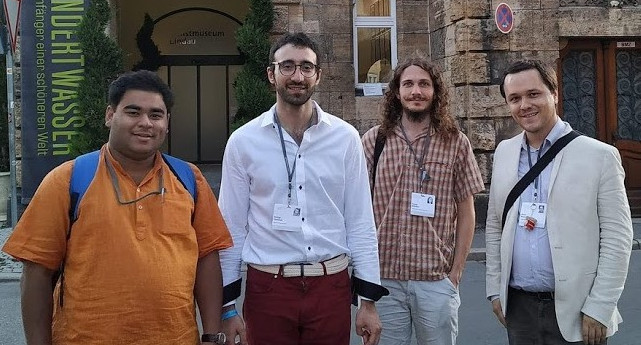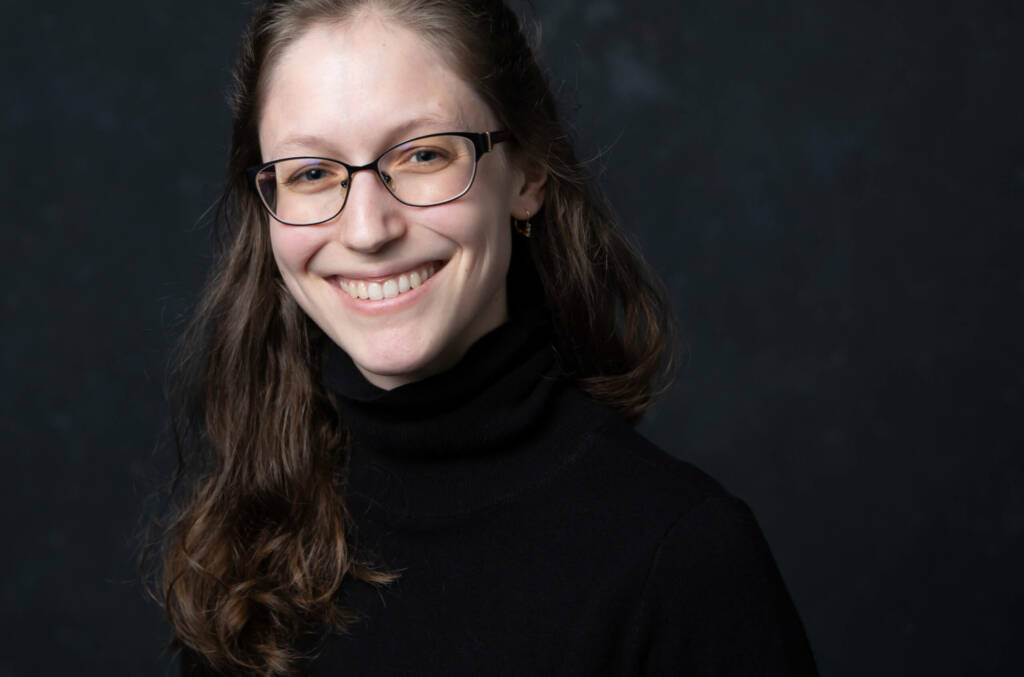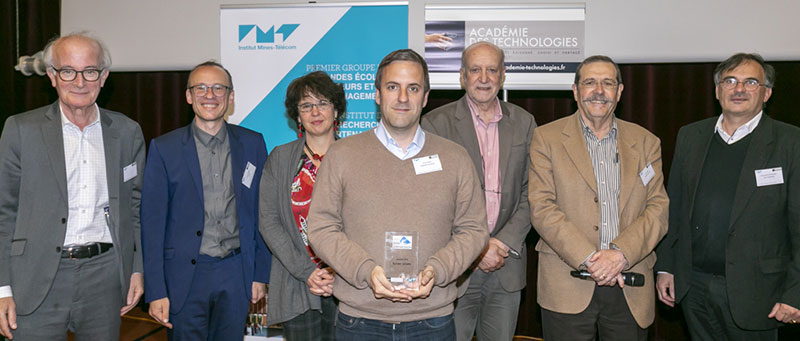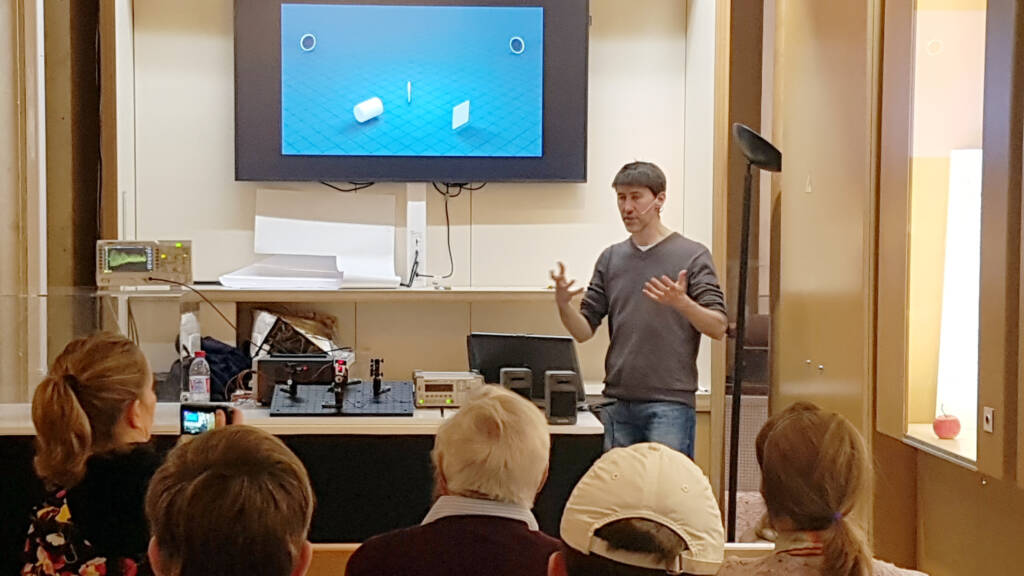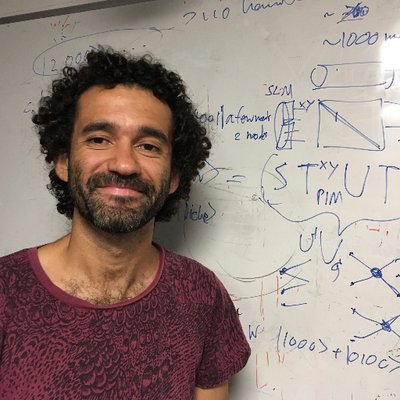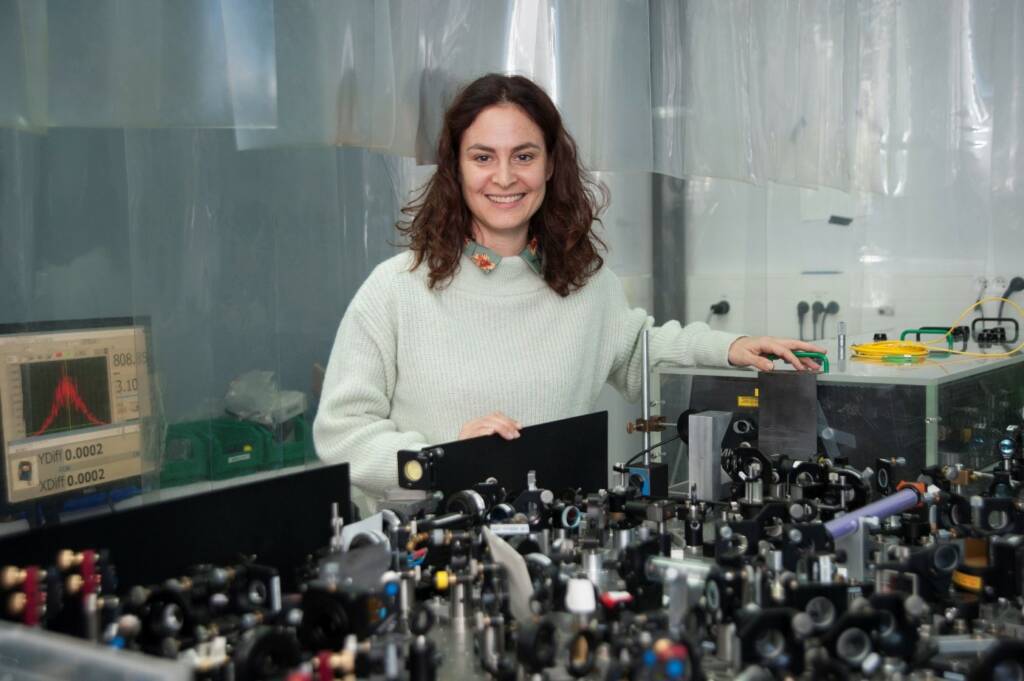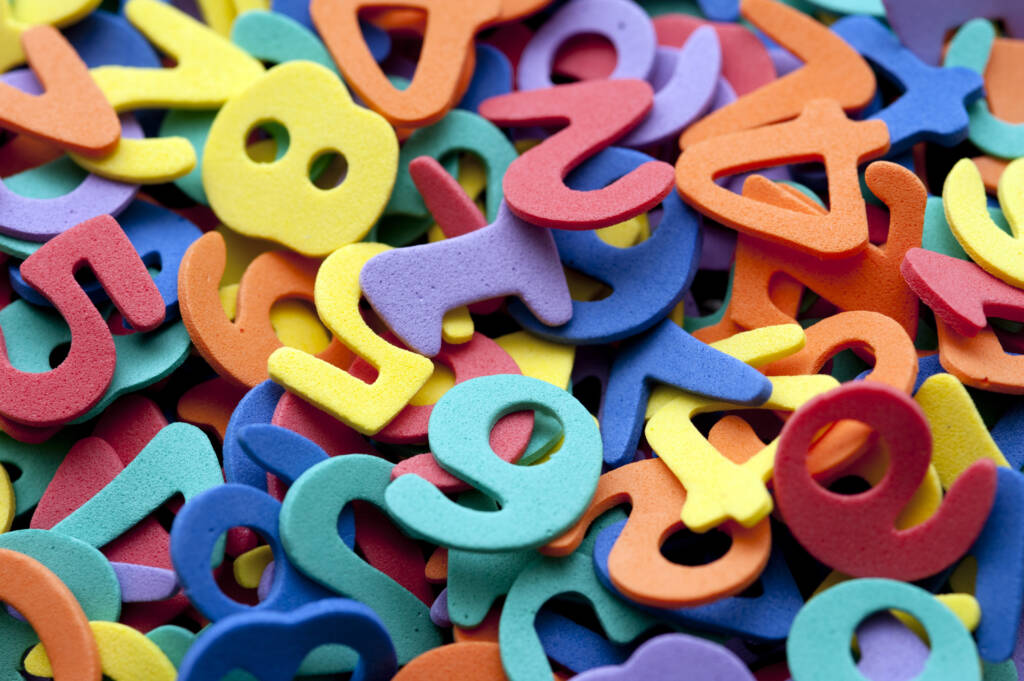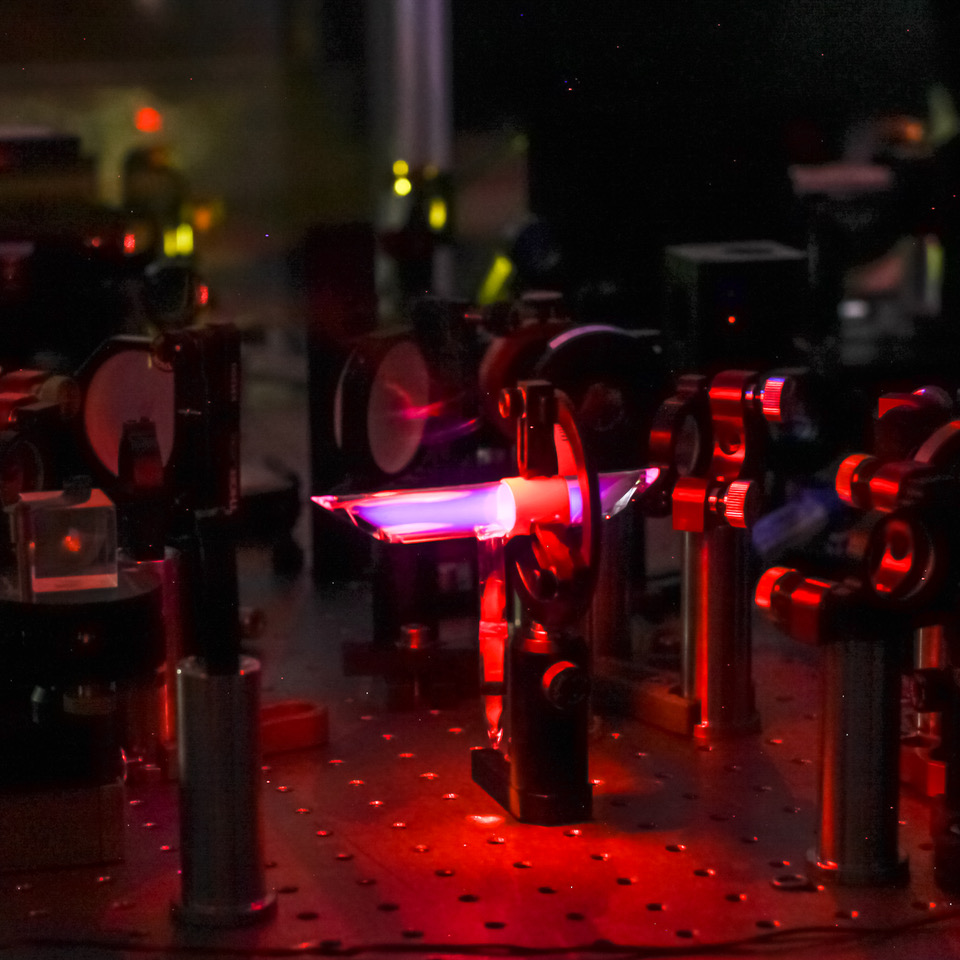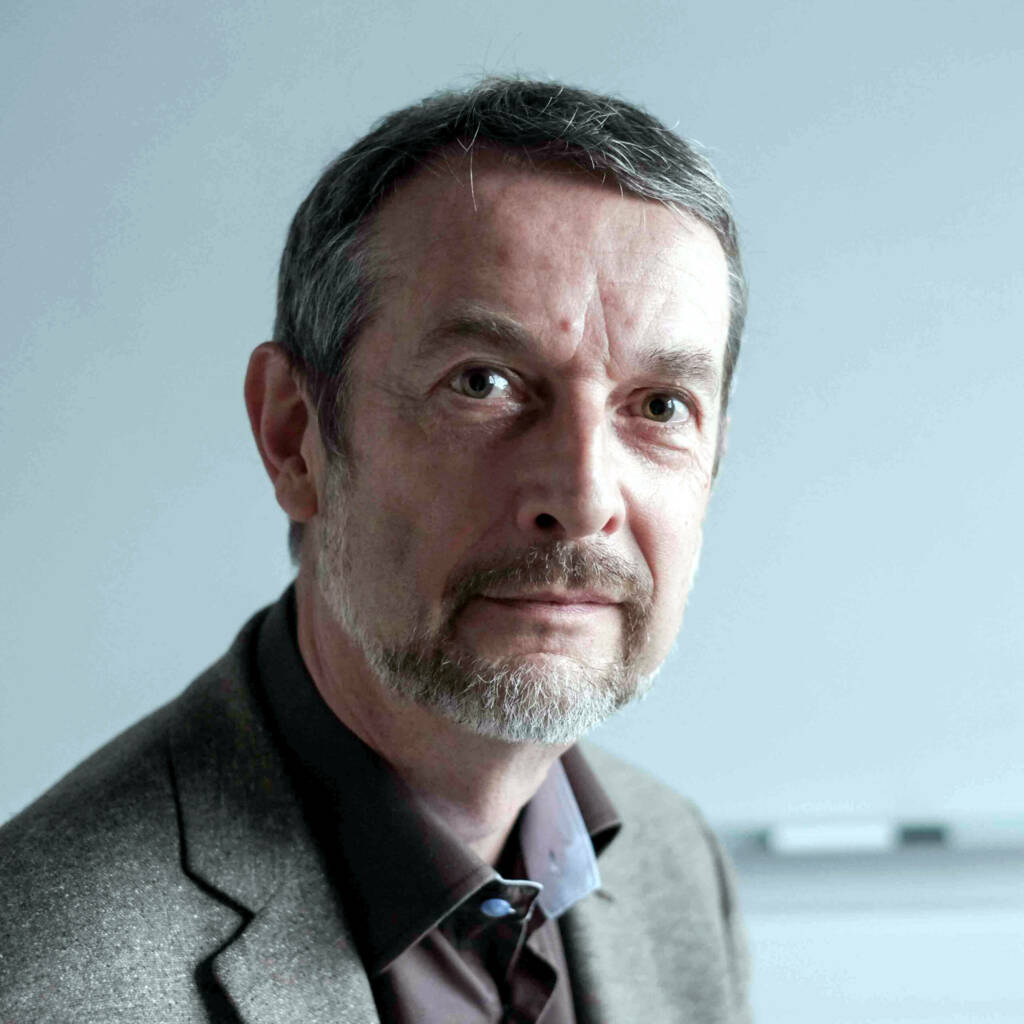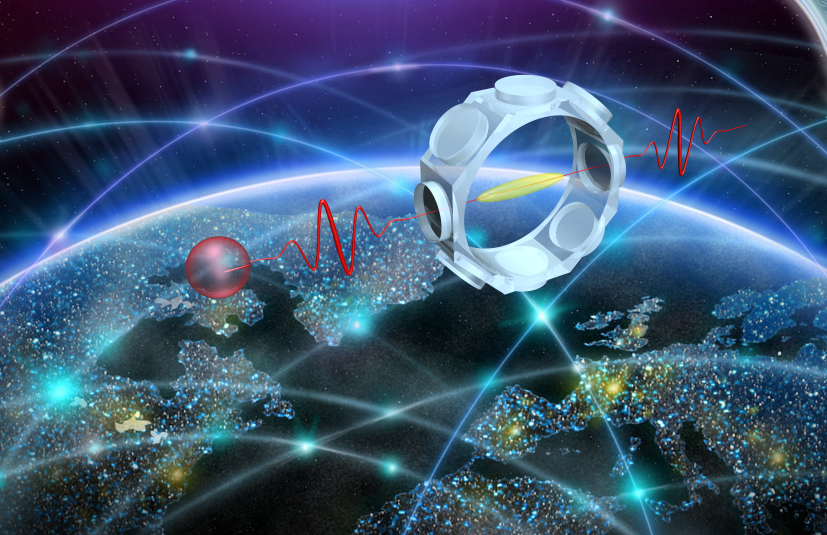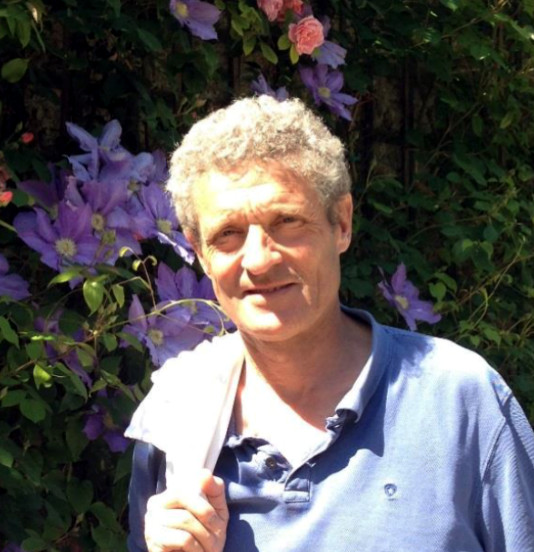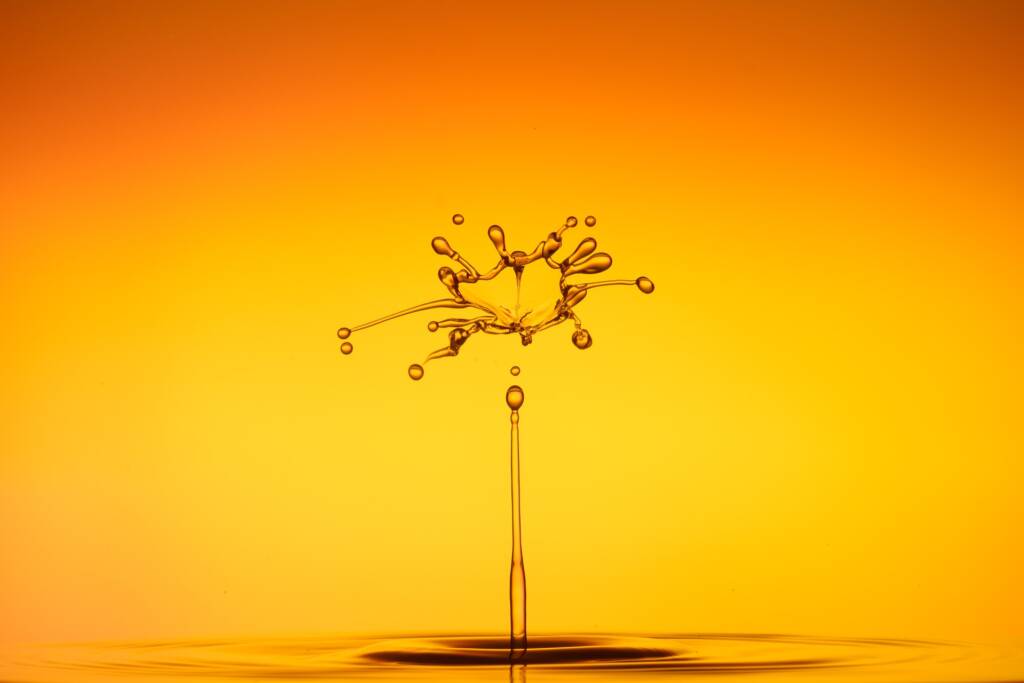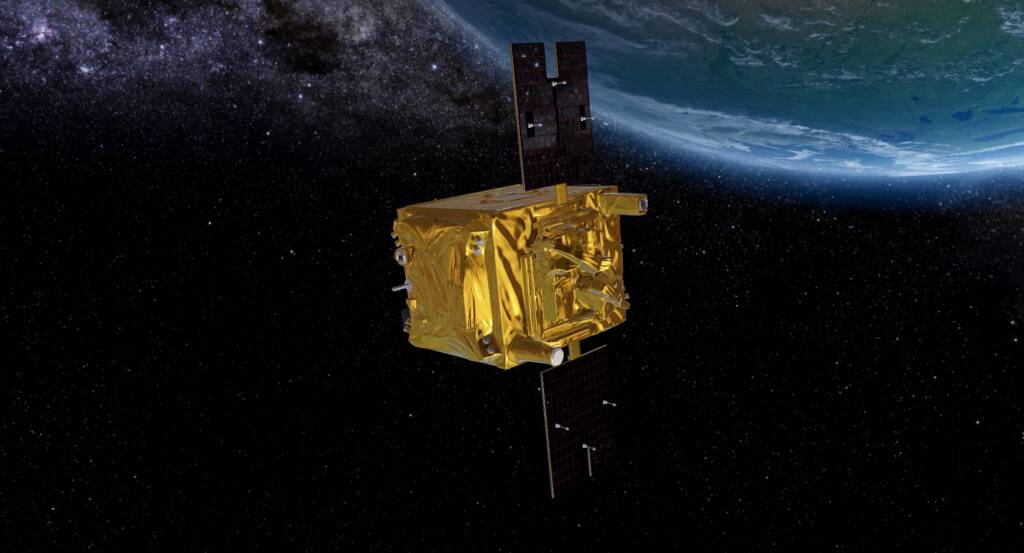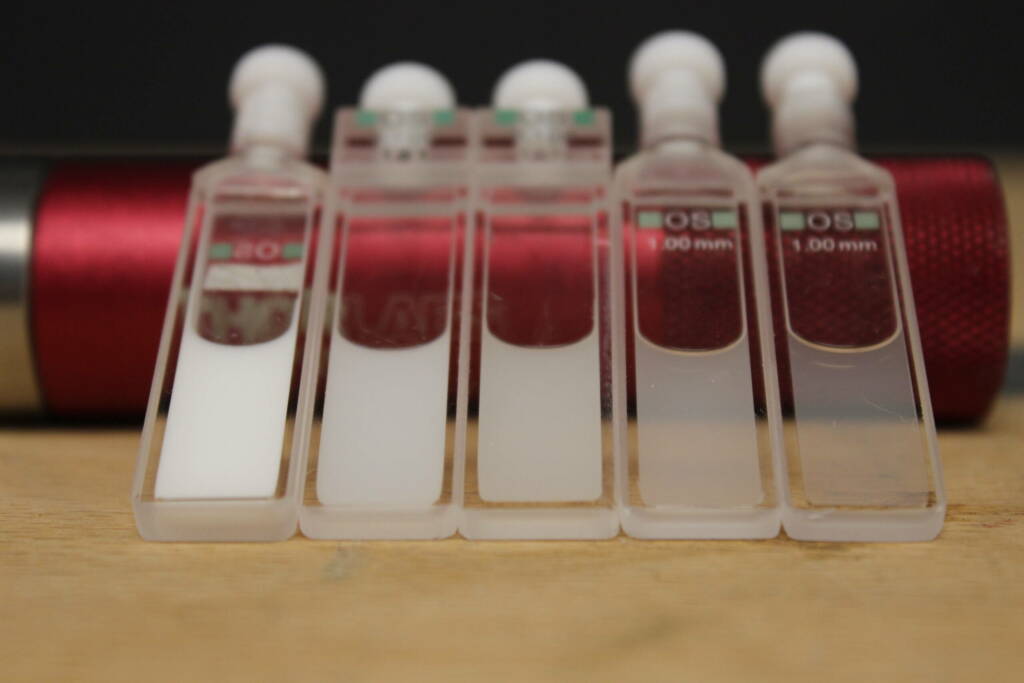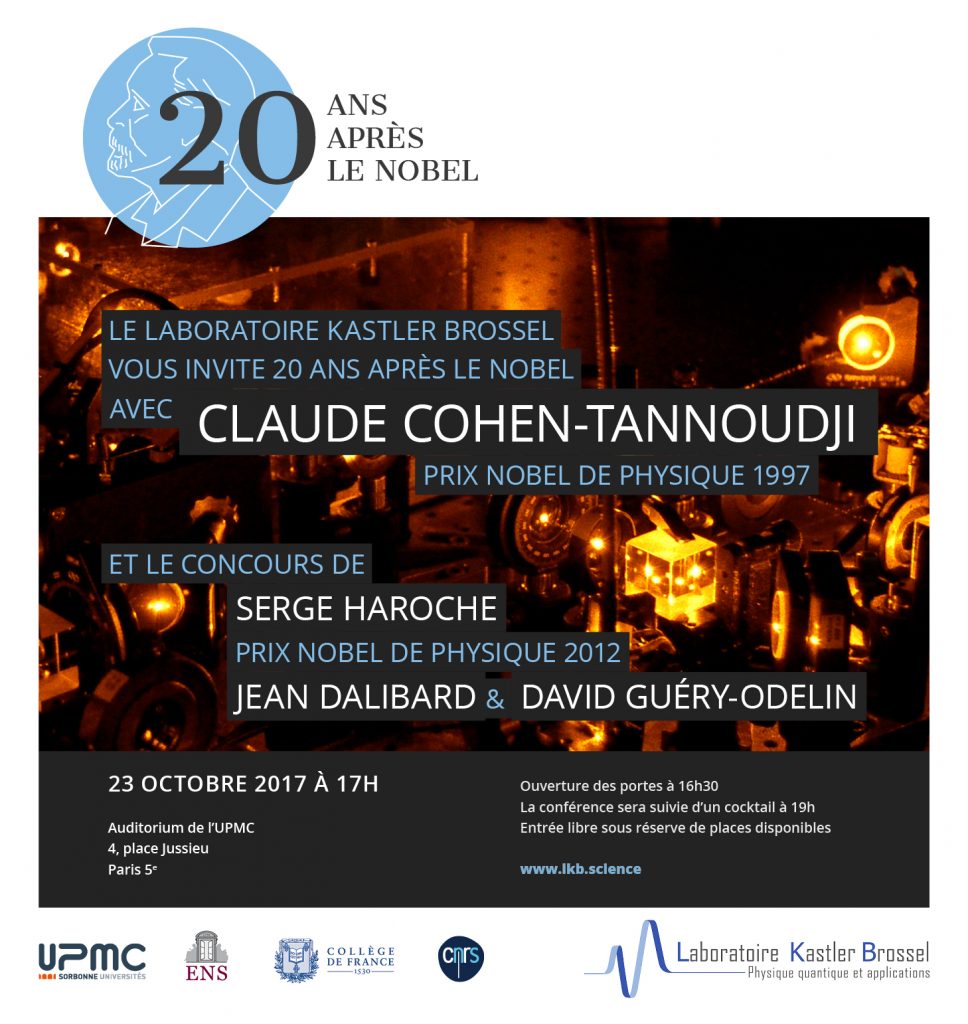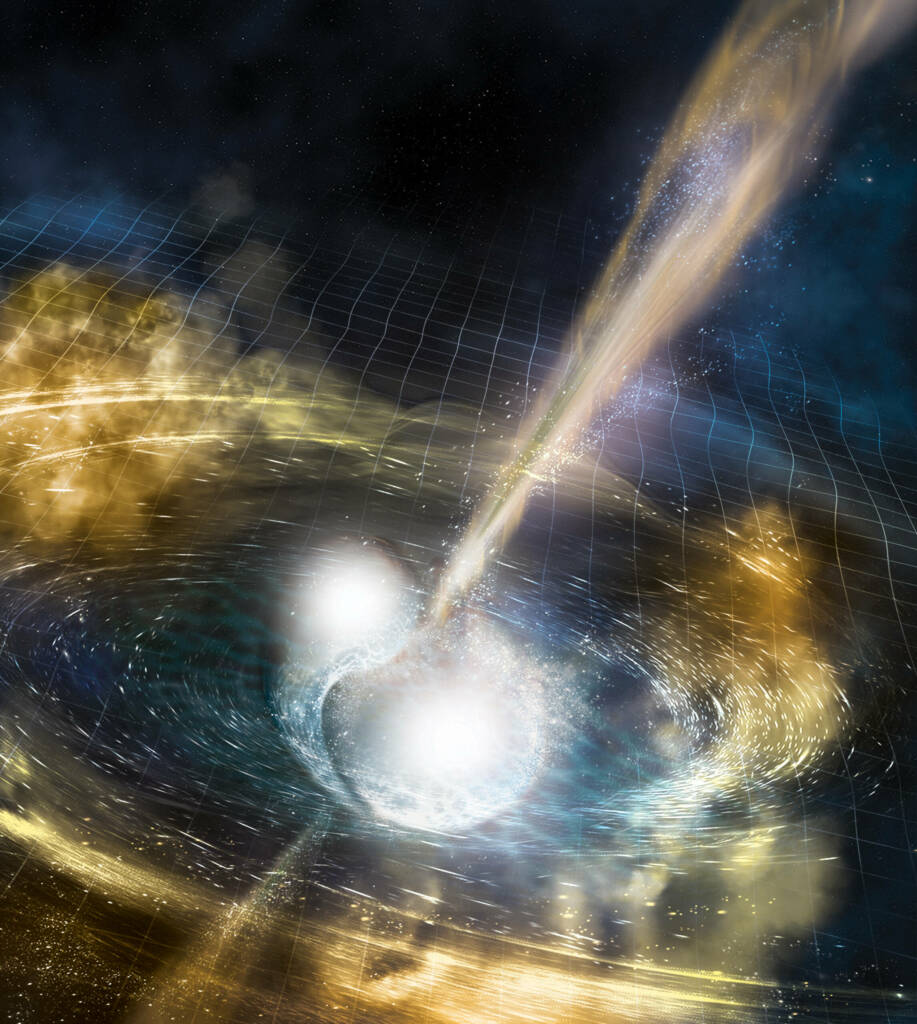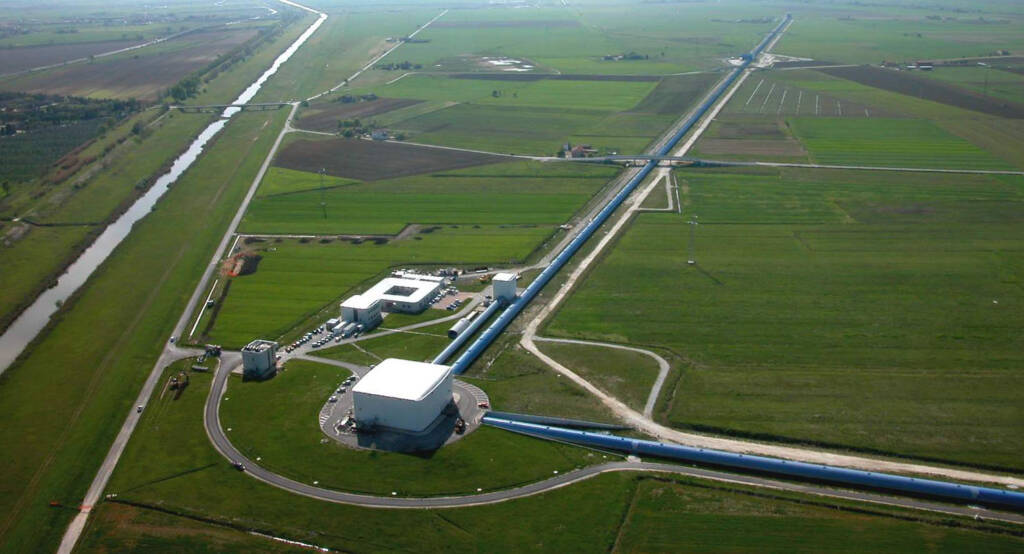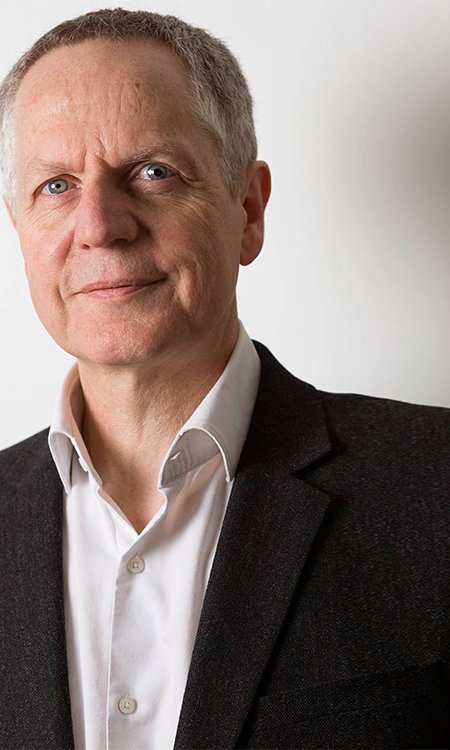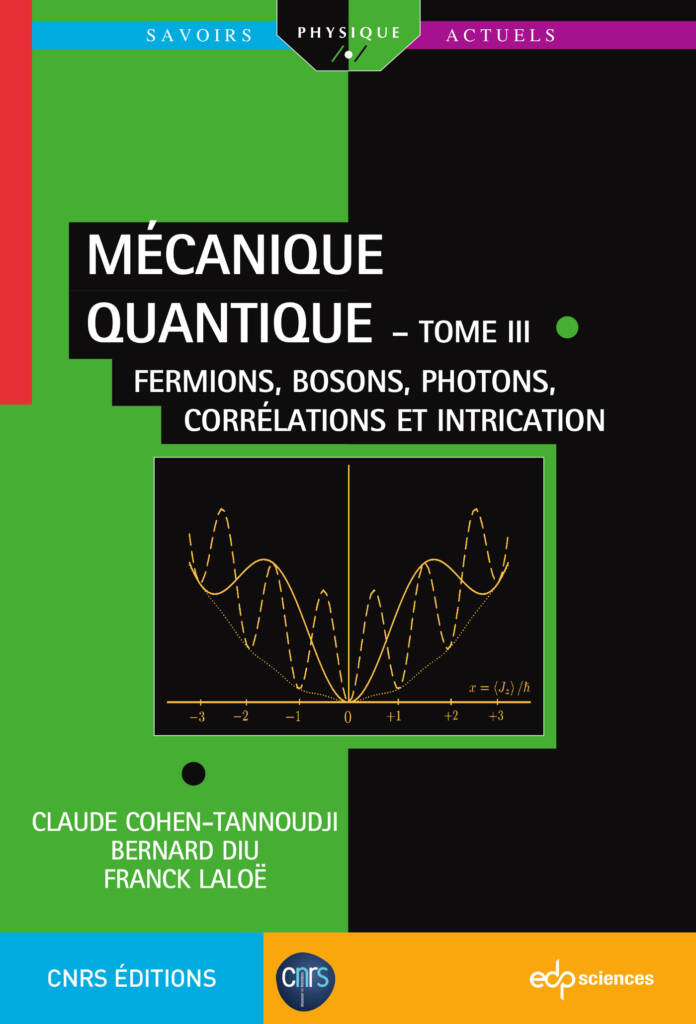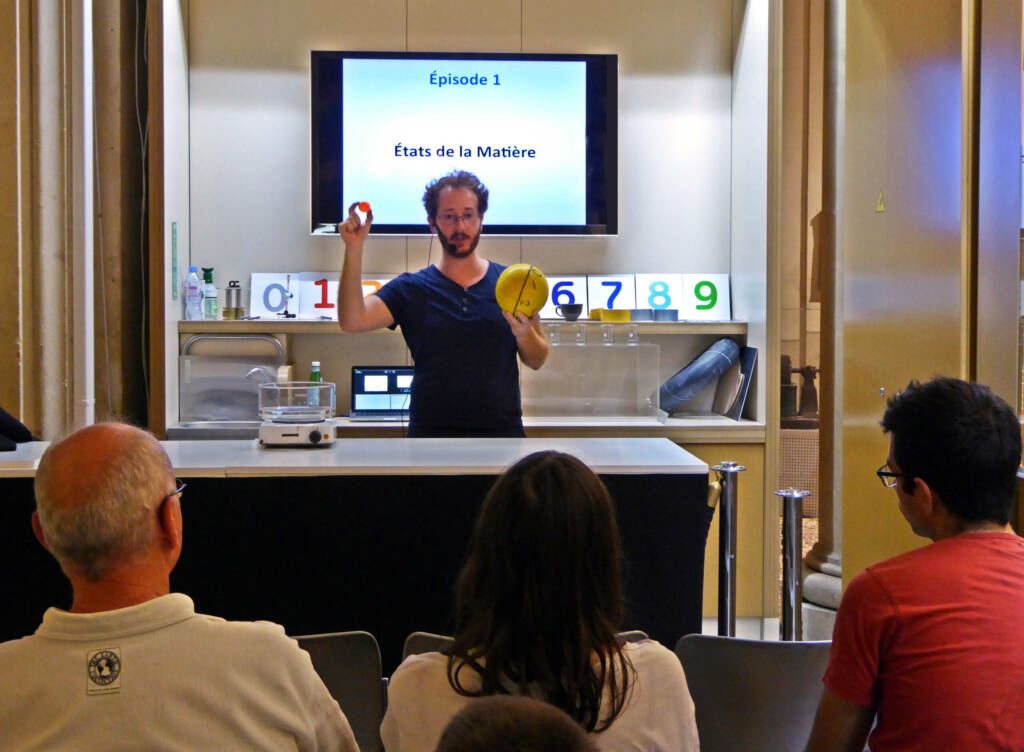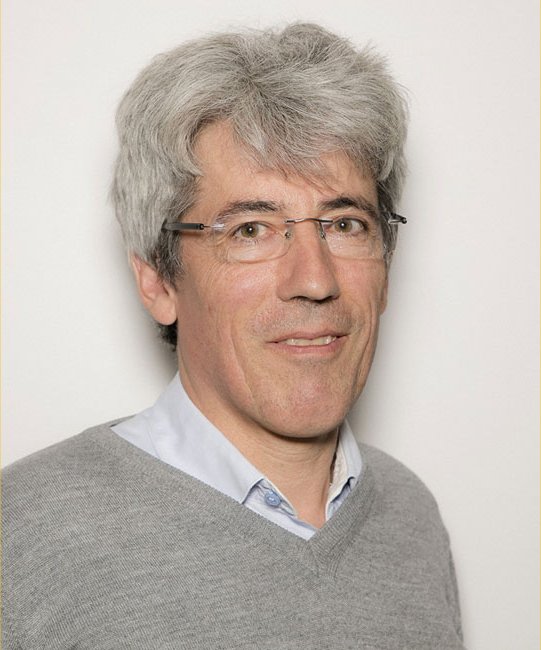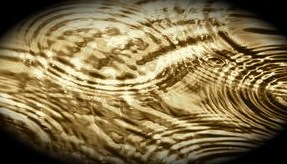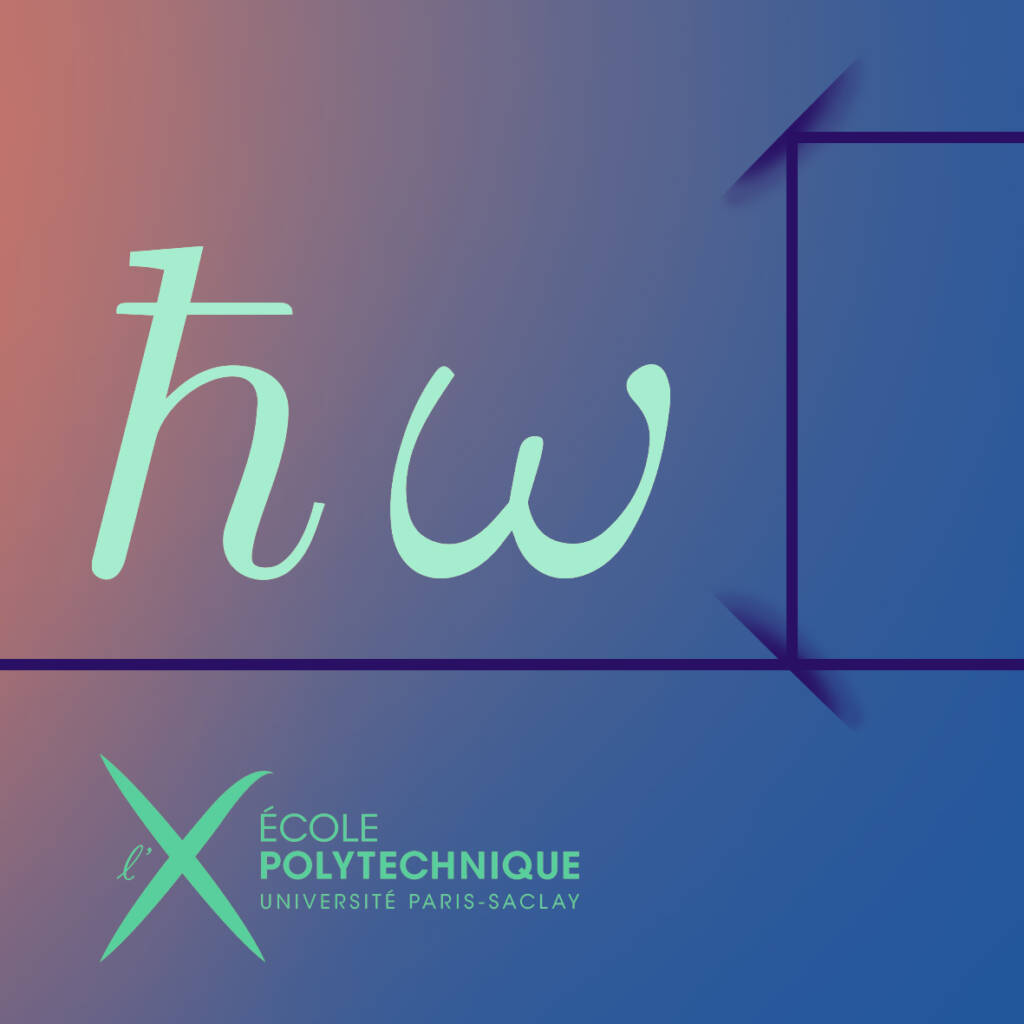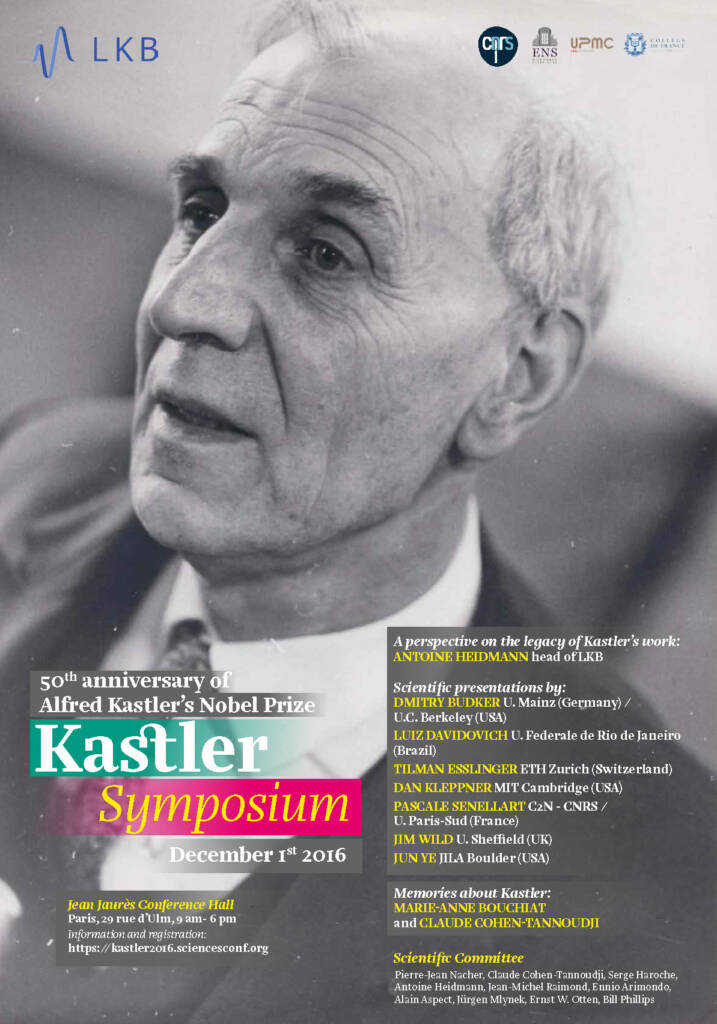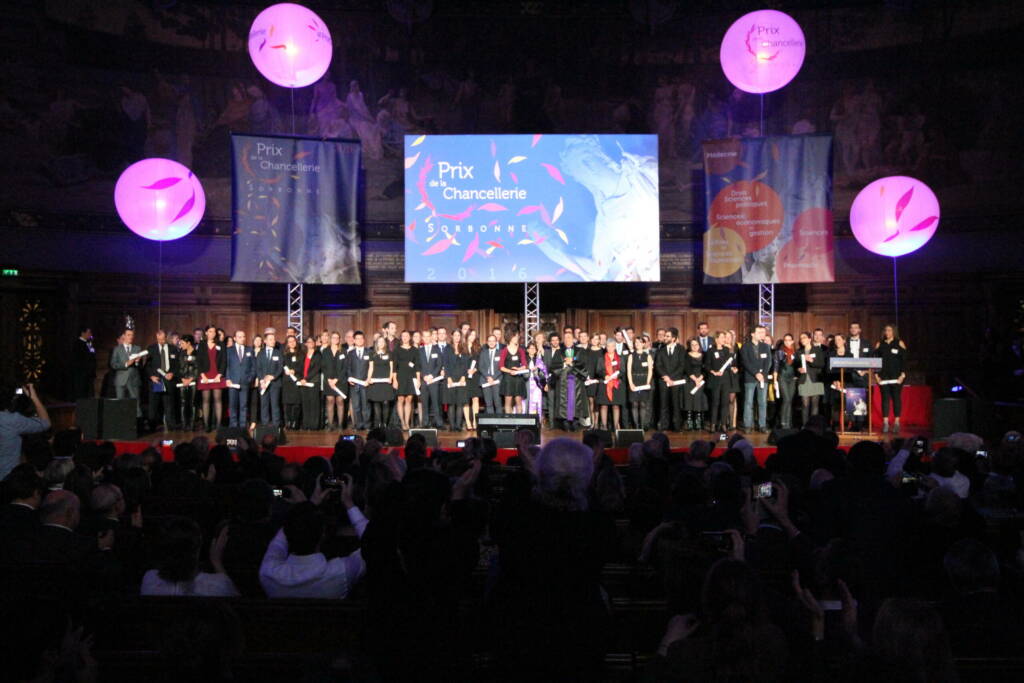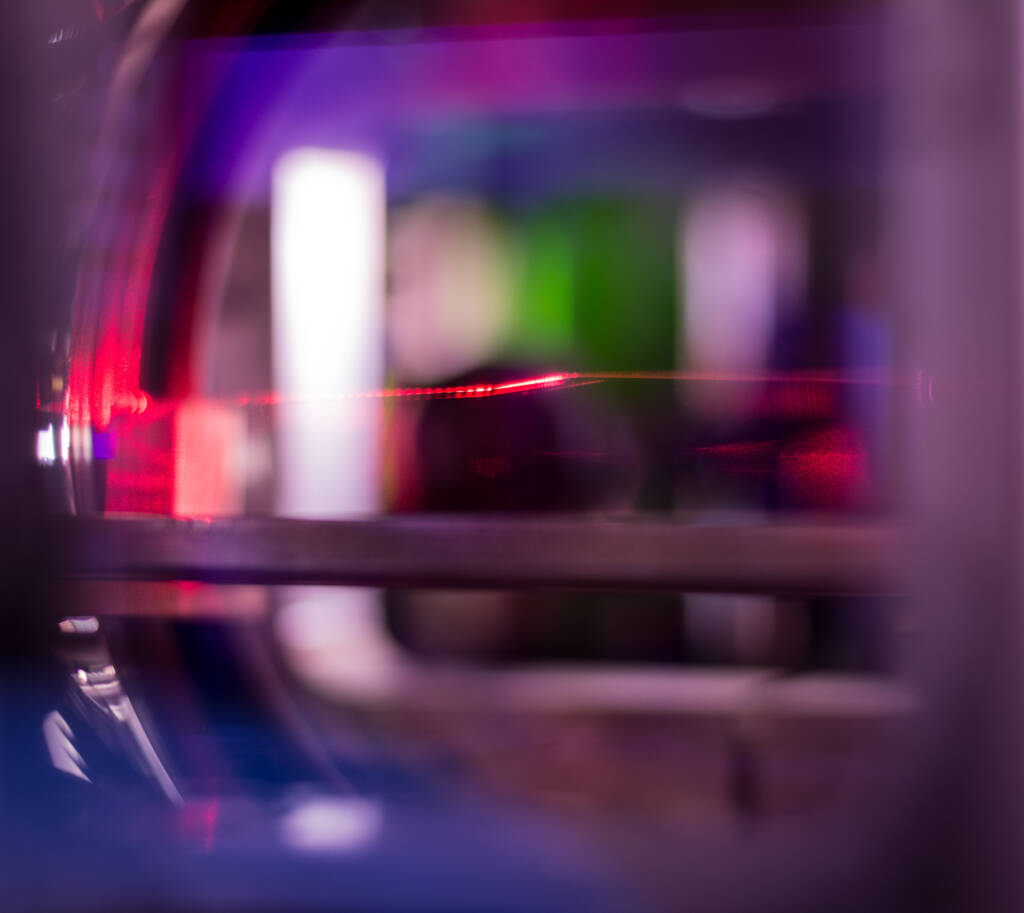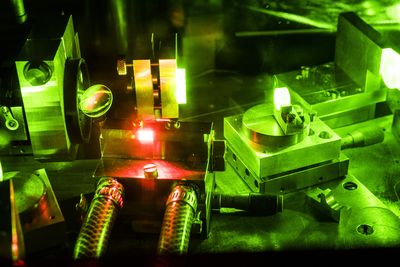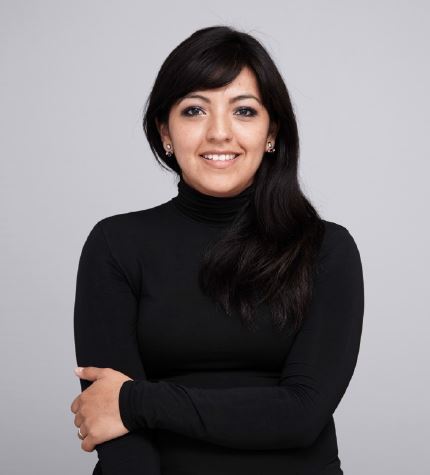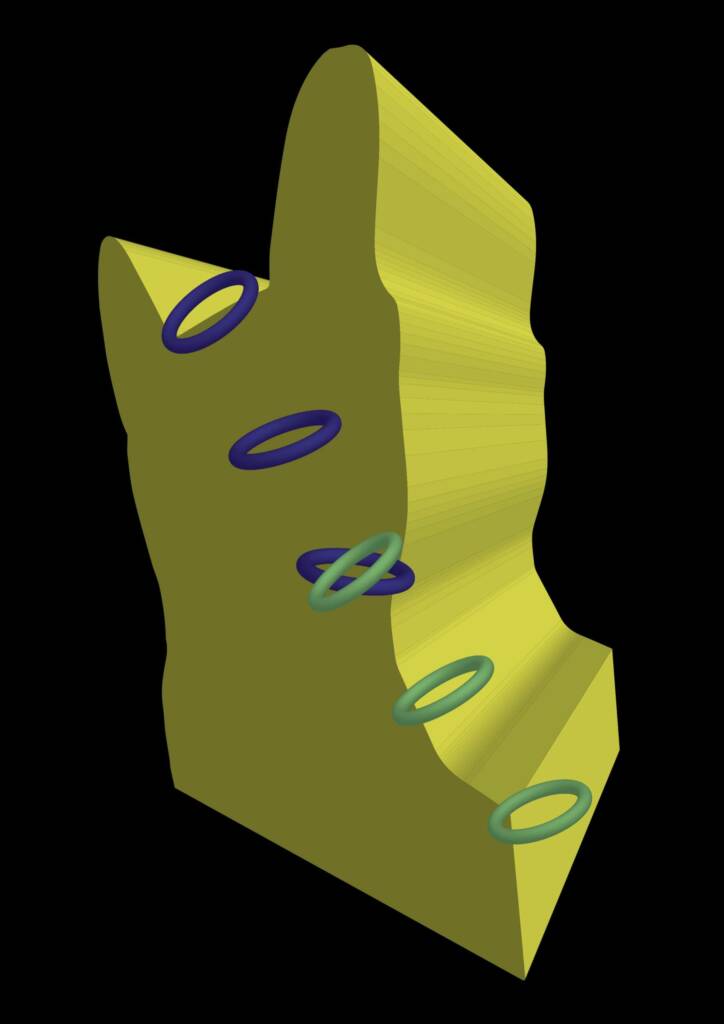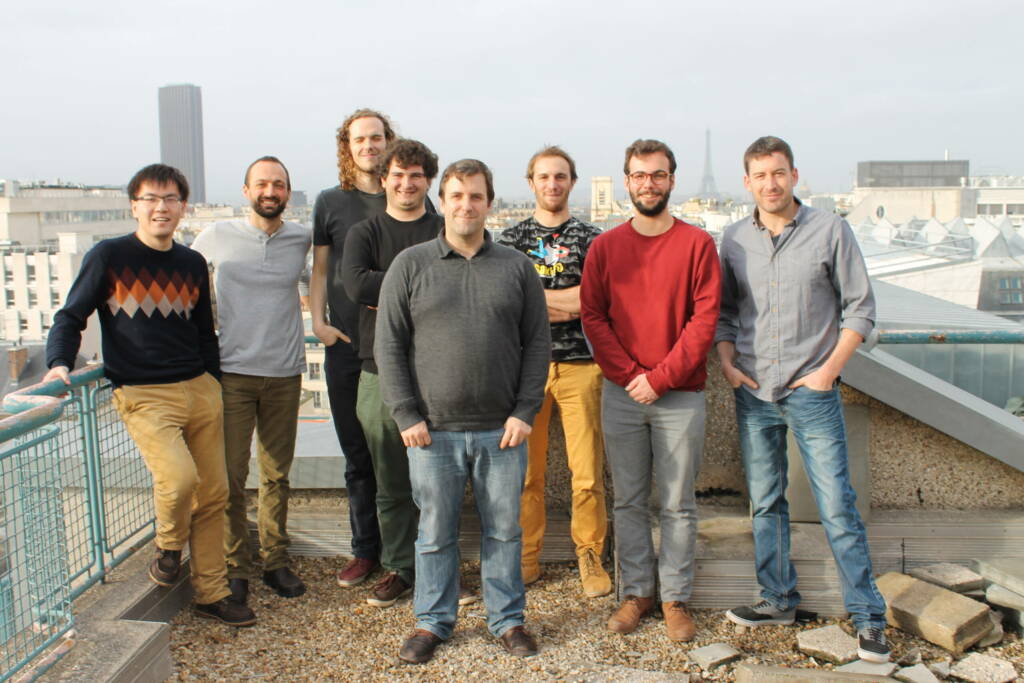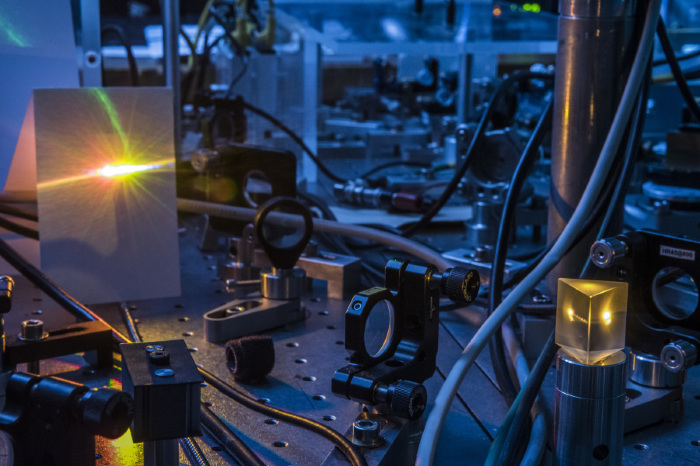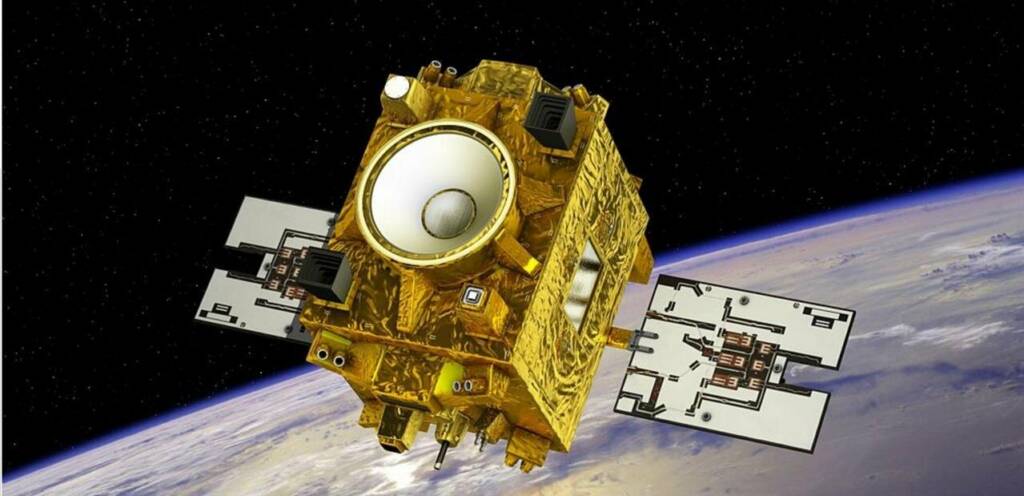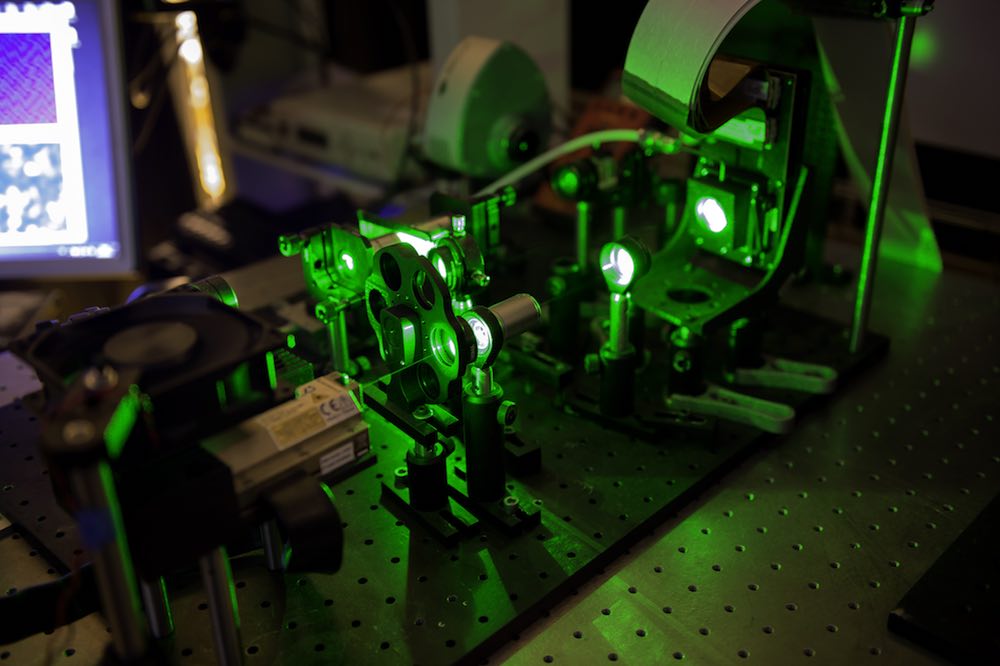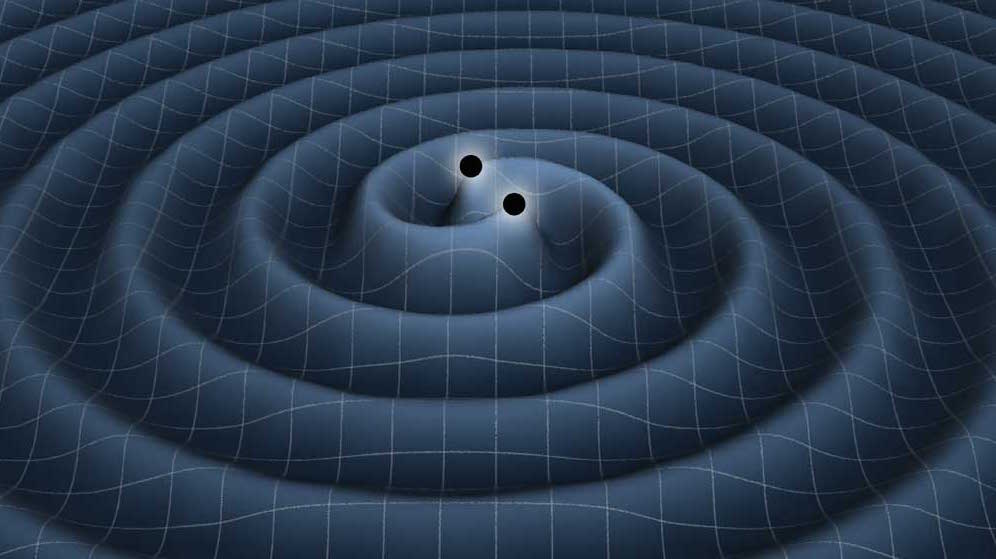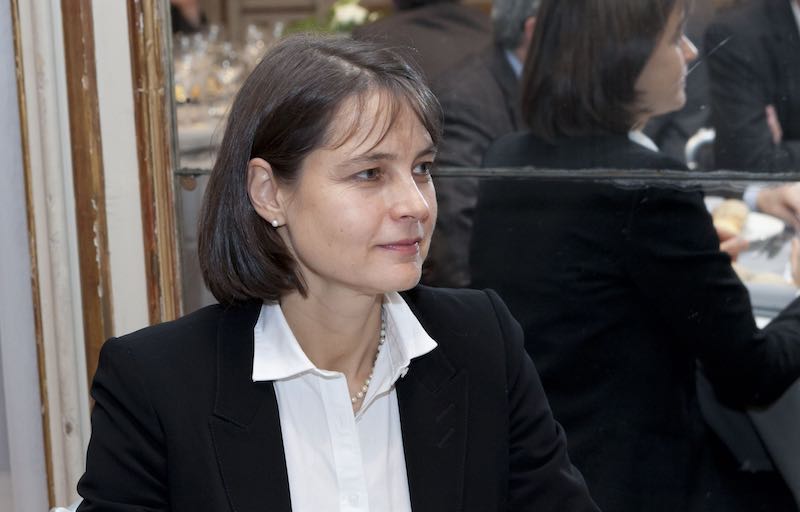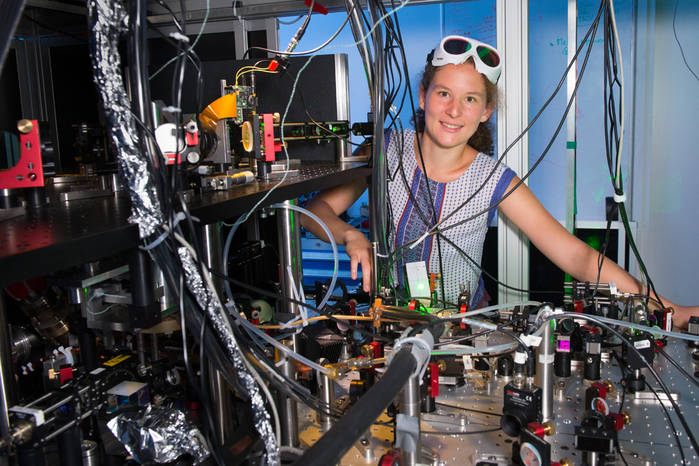News
Two LKB members named to the IUF in 2025!
Two professors from the Laboratoire Kastler Brossel have been named members of the Institut Universitaire de France (IUF) in recognition of the quality of their work and research project!
Phase transitions: a wave that doesn’t propagate but spreads like tea in water
A new quantum phenomenon: a Nambu Goldstone mode that does not propagate, but rather diffuses.
How to observe a quantum wave packet in situ?
Researchers have successfully observed the free expansion of a quantum wave packet of a single atom in continuous space. Using a novel imaging technique that combines optical trapping and quantum gas microscopy, they tracked with unprecedented precision the spreading of the probability density associated with an atom released from its trap.
ACES/PHARAO space mission
After 25 years of development, the ACES/PHARAO space mission will launch to the International Space Station on April 21, 2025, at 10:15 a.m. Paris time, from Cape Canaveral, Florida.
Roberval award – Jury’s Special Mention
Sylvain Gigan
International Day of Women and Girls in Science!
February 11
Artist in residence at the LKB
Caroline Delétoille
Saïda Guellati-Khelifa and Pierre Cladé receive the 2024 Servant prize from the French Academy of Sciences
Saïda Guellati-Khelifa and Pierre Cladé have designed cutting-edge experiments for precision measurements using cold atoms.
Certify the properties of N-body quantum states
A new theoretical approach to the N-body quantum problem has been developed, providing, for the first time, a rigorous estimate of the errors made by approximate solutions calculated through numerical simulations using traditional methods.
Julien Laurat receives the 2024 Jean Jerphagnon Prize
The Jean Jerphagnon Prize 2024 honors Julien Laurat, Co-Founder of the startup Welinq for his outstanding contribution for the development of quantum memories.
Quantum Hall effect in 4D
Researchers at LKB have created cold dysprosium atoms showing 4D quantum Hall effect behavior by utilizing synthetic dimensions ! This breakthrough opens new avenues in quantum physics beyond solid-state systems.
Cold-atom elevator
Published in Physical Review Letters, researchers from LKB and their colleagues have developed an ‘elevator’ for atoms, to connect quantum simulators to an atomic reservoir, paving the way for creating exotic quantum states and studying their transport properties.
A superconducting qubit used as an ultra-sensitive sensor in the radio-frequency domain
A LKB team has demonstrated an unprecedentedly low-frequency superconducting “fluxonium” qubit, which could facilitate experiments that probe macroscopic quantum phenomena.
Universal Casimir attraction between filaments at the cell level
Numerical simulations reveal that long-range interaction between objects in an ionic fluid, via electromagnetic field fluctuations, plays an important role for filamentary objects, with implications for our understanding of the self-organization of cellular structures.
Fei Xia wins Optica Foundation Challenge to develop smart microscope
Fei Xia, a postdoctoral researcher in the Complex Media Optics team led by Sylvain Gigan, has won a $100,000 grant from the Optica Foundation to explore new approaches for disease screening and treatment side-effect monitoring with the “smart microscope” that will facilitate non-invasive biopsies.
Long-lived metrological spin squeezing
Atomic clocks and sensors are among the most precise measurement instruments in the world, but they can still be improved.
Passing of Dominique Delande
It was with great sadness that we learned of the death of Dominique Delande on 3 October. Dominique faced his long illness with courage and serenity for many years.
Four LKB members appointed to the IUF FOR 2023
The Institut Universitaire de France has named four members of the Kastler Brossel Laboratory in the class of 2023. This prestigious 5-year appointment recognizes the high quality of their research work.
Nancy Paul awarded ERC Starting Grant 2023!
Nancy Paul, a CNRS researcher working in the Metrology and Fundamental Tests group, has been awarded a prestigious ERC Starting Grant.
Shining new light on photonic quantum computers
What make a quantum computer different from a normal -often called “classical”- computer?
Two LKB members win ERC 2022 grants
Julien Laurat and Quention Glorieux, two members of the Laboratoire Kastler Brossel, have been awarded prestigious ERC grants.
Two LKB members appointed to the IUF
L’Institut Universitaire de France has named two members of the LKB for the class of 2022.
Superfluid Helium and Negative Pressures
Recent results published in Physical Review Letters challenge previous estimates of the cavitation pressure.
The final results of the MICROSCOPE mission reach record precision
The MICROSCOPE mission has just confirmed the principle of equivalence with a record precision of a few 10-15.
A surprisingly large Casimir force at biophysical interfaces
The force becomes universal in the sense that it no longer depends on the dielectric functions but only on the geometric parameters
A mosaic made of spins
The team propose a first step towards a technology that allows a fast calculation of the Ising problem thanks to an experimental setup based on light.
Jean-Michel Courty, one of the recipients of the first CNRS Medal for Scientific Mediation
Depuis plus de 20 ans, Jean-Michel Courty donne à voir la physique dans ce qu’elle a de plus accessible à travers une activité intense en médiation scientifique et en communication.
Jean Dalibard receives the 2021 CNRS gold medal
Jean Dalibard (Bose-Einstein Condensates team of the laboratory) has received the 2021 CNRS gold medal, one of the most prestigious French scientific awards, for his pioneering work in ultra-cold quantum matter physics.
Dark-soliton molecules in a polariton superfluid
Experiments performed the Quantum Optics team show that dark solitons in a quantum fluid of polariton quasiparticles can bind together to form a soliton molecule
Quantum fluctuations of light make Virgo mirrors jitter
A quantum effect revealed for the first time in the Advanced Virgo and Advanced LIGO gravitational wave detectors
Bringing quantum revolutions to the classroom
Did you know that most modern technologies that we use on a daily basis already rely on quantum phenomena?
Once upon a time there were modes and states in quantum optics
Update of a non-trivial topology property of quantum states
Probing chiral edge dynamics and bulk topology of a synthetic Hall system
Update of a non-trivial topology property of quantum states.
Enigmatic black holes revealed by gravitational waves
LIGO and Virgo Gravitational Wave Detectors’ biggest catch to date on the board
Fundamental constants: the molecular hydrogen ion joins the play
A collaboration between researchers from Vrije Universiteit, LKB and the Joint Institute for Nuclear Research determined the proton-electron mass ratio with 11 significant digits !
Squeezing multimode quantum states to enhance sensor networks
Researchers from LKB and CNR (Florence, Italy) have developed a theoretical method that characterizes the squeezing of multiple quantum observables
Connecting the quantum internet
Researchers at the Kastler Brossel Laboratory in Paris have succeeded in implementing a novel “hybrid” entanglement swapping protocol, bringing within reach the connection of disparate platforms in a future, heterogeneously-structured, quantum internet.
Jérôme Beugnon has been Awarded an ERC Consolidator Grant
New ERC TORYD for Jerome Beugnon
Recording neuron in actions at depth by unmixing scattered light
A new article from the Complex Media Optics team published in Nature photonics
Laser light traps giant atoms
For the first time, physicists of Kastler Brossel Laboratory have been able to use light to trap giant atoms, so-called circular Rydberg atoms. This work will push the limits of currently developed quantum technologies that use these atoms of remarkable properties.
Maria Skłodowska and Pierre Curie prize reward Dominique Delande and Jakub Zakrzewski
Jakub Zakrzewski and Dominique Delande began their scientific cooperation in 1991.
Valentina Parigi awarded by a CNRS Bronze Medal
This award honours the early work of researchers who have become specialists in their field.
Anomalous decay of coherence in a dissipative many-body system
Our work shows that strong interactions drastically modify the picture and lead to a slowing down of the decoherence process associated with a universal power-law decay.
Multicoloured quantum light goes non-Gaussian
A frequency comb as a platform for quantum information processing.
François nez receives the Félix Robin 2019 award
The French Physical Society decided to grant the Félix Robin 2019 prize to François Nez, research director at the CNRS and researcher at the LKB since 1994
Noninvasive light focusing in scattering media using speckle variance optimization
Optimizing the variance of the fluorescent signal
80 years of the CNRS: the LKB presents the interferometer kit
Researchers at the Kastler Brossel Laboratory (LKB) have developed an innovative interferometer kit that works on similar principles to the Virgo gravitational wave detector.
69e Lindau Nobel Laureate meeting
Four members of the laboratory took part in the 69th Lindau Nobel Laureate Meeting.
Nanofibre and cold atoms: a new quantum platform
By modifying the structure of the waveguide, it is possible to increase the interaction between light and atoms in a single passage, or to achieve interactions of tunable range between the atoms.
Nancy Paul-Hupin, Winner of the Daniel Guinier Award 2018
SFP announces its 2018 Young Investigators Award
Sylvain Gigan receives the 2019 Jerphagnon Award
The Jean Jerphagnon Prize promotes research, development and technological innovation in optics and photonics.
Gravitational waves at the Palais de la découverte
The animation “1 chercheur-e 1 manip” explores the detection of gravitational waves
An Algorithm from Netflix Challenge to Speed Up Biological Imaging?
Record-fast speeds make spontaneous Raman spectroscopy more practical for biomedical applications
Valentina Parigi wins ERC Consolidator Grant
COQCOoN project
High-precision calculations in quantum statistical physics using a divergent sum
Theorists from LKB and LPS have developped a new method for computing properties of many fermions.
Liquid light in atomic vapors
A new experimental platform to study “liquid light”
Launch of the Flagship on quantum technologies and results of the first call for proposals
The LKB is involved in 4 Flagship projects
Claude Fabre, laureate of the “Grand Prix Léon Brillouin”
The SFO rewards Claude Fabre for all his research
Two LKB members appointed to the IUF
Quentin Glorieux and Alberto Bramati honoured
Record-breaking efficiency for secure quantum memory storage
A record efficiency of 70%
Christophe Salomon is elected member of Sciences academy
He is a member of the Kastler Brossel Laboratory, head of the Ultracold Fermi Gases team.
Phonon-roton coupling in liquid helium and in superfluid Fermi gases
Superfluidity of Helium-4 and sound waves
First results of the MICROSCOPE satellite confirm the validity of the equivalence principle at an unprecedented precision
This is a new confirmation of general relativity, the theory proposed one century ago by Albert Einstein which has been verified recently by the first direct detection of gravitational waves.
Experimental demonstration of an invariance property of waves in complex media
Discovery of a new property of light
The Laboratoire Kastler Brossel invites you: ‘20 years after the Nobel Prize’.
with Claude Cohen-Tannoudji
Gravitational Waves provide first light on a Neutron Star Merger
First observation of a Binary Neutron Star Merger.
Gravitational Waves: First Detection with Triple Detectors LIGO and Virgo
Advanced Virgo allows significantly greater sky localisation of astrophysical sources of gravitational waves.
Jean Dalibard receives the BEC award 2017
Jean Dalibard, a researcher at the LKB and a professor at the Collège de France, was awarded the BEC award senior 2017 award.
Publication of Volume III of Quantum Mechanics by EDP Sciences
Aujourd’hui, le 07 septembre 2017, sort en librairie le très attendu tome III de la Mécanique quantique : fermions, bosons, photons, corrélations et intrication, signé par Claude Cohen-Tannoudji (prix Nobel de physique), Franck Laloë et Bernard Diu.
Science in motion
The LKB is at the Palais de la Découverte in Paris
Michel Brune wins the 2017 Prix des Trois Physiciens
The 2017 Prix des Trois Physiciens has been awarded to Michel Brune
A new regime of sound attenuation in a superfluid
Sound attenuation in a superfluid
A new MOOC on quantum optics
A new MOOC on quantum optics created by Alain Aspect and Michel Brune is now online.
Symposium Alfred Kastler
The objective of the symposium is to review fields of physics and applications that have emerged and flourished worldwide from Kastler’s founding ideas.
Two LKB doctoral students receive awards!
Adrien Facon is the 2016 winner of the Chancellery Thesis Prize and Baptiste Gouraud is the 2016 winner of the DIM Nano-K ‘Cold Atoms’ Thesis Prize.
A tiny mirror – Physicists reflect light with only 2000 atoms
In the September 23th issue of the Physical Review Letters, Prof. Julien Laurat and his team report they have managed to realize an efficient mirror constituted of only 2000 atoms.
After the proton, now the deuteron
Again, the deuteron radius is smaller than expected anfd in good agreement with the proton radius deduced from muonic hydrogen spectroscopy, thus reinforcing the “proton radius puzzle”.
Karina Jimenez Garcia Winner of the 2016 L’Oréal Fellowship for Women in Science
On 12 October, Karina Jimenez Garcia was awarded the L’Oréal-Unesco Prize for Women in Science ‘young researcher generation.
Schrödinger’s cats to measure the electric field of a single electron
Des physiciens viennent de réaliser un électromètre ultrasensible qui repose sur l’utilisation d’atomes excités portés dans une superposition d’états de type “chat de Schrödinger.”
Sylvain Gigan receives the Prix Fabry-de Gramont 2016
Sylvain Gigan receives the Fabry-de Gramont Prize.
Controlled Generation of Vortices in a Superfluid of Light
“One of its most intriguing properties is superfluidity, which manifests as the absence of friction when the fluid flows.”
The Microscope Satellite and the Equivalence Principle
The CNES Microscope satellite was launched on Monday, April 25. Its goal is to test the equivalence principle.
A new ultra-fast, energy-efficient optical coprocessor for big data
Sylvain Gigan, a member of LKB, is one of the six inventors behind the LightOn project.
Gravitational Waves: And Two!
Three months after the announcement of the first detection, scientists from the LIGO and Virgo collaborations present a second observation of the coalescence of two black holes, revealed by the gravitational waves emitted during this event. Although the signal is weaker than the first, this second detection is also confirmed with more than 99.99999% confidence.
Astrid Lambrecht, Winner of the 2016 Gentner-Kastler Prize
The German Physical Society (DPG) and the French Physical Society congratulate Astrid Lambrecht, the recipient of the 2016 Gentner-Kastler Prize.
Laura Corman, Winner of the L’Oréal-UNESCO For Women in Science Fellowship
Laura Corman, a PhD student in Jean Dalibard’s team, received one of the 20 L’Oréal-UNESCO For Women in Science national fellowships on October 1st, for her work on “atoms guided by light.”


